This document provides information about an Advanced Java Programming course taught by Dr. S.SHAIK PARVEEN. It includes details about the course such as prerequisites, objectives, units, and basic Java syntax concepts covered. The document outlines topics like variable declarations, operators, control flow statements, arrays, and object-oriented programming concepts in Java. It aims to teach students advanced Java programming skills like implementing object-oriented principles, working with classes, methods, and threads, as well as creating applets, GUI components, and Java beans.
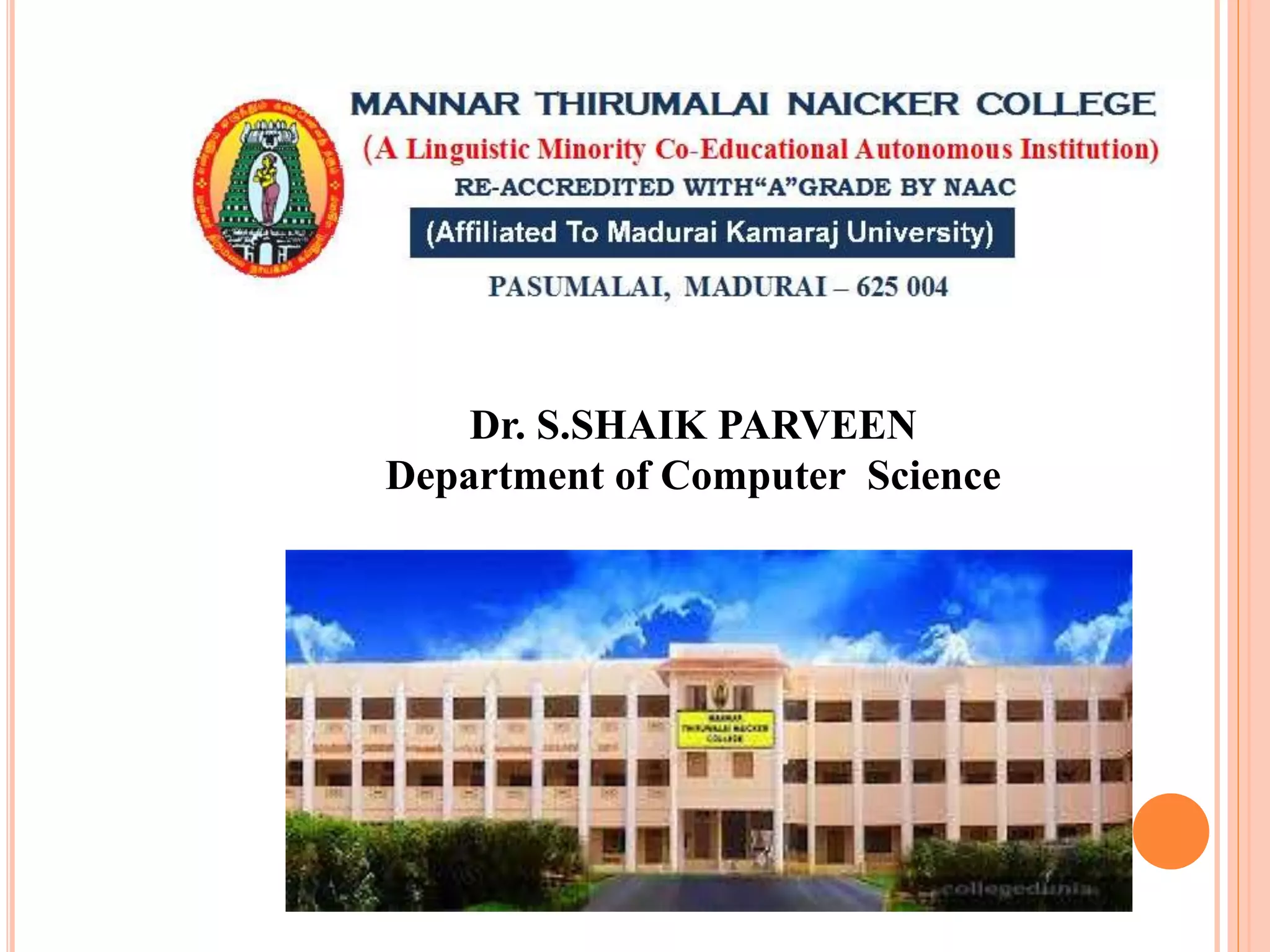

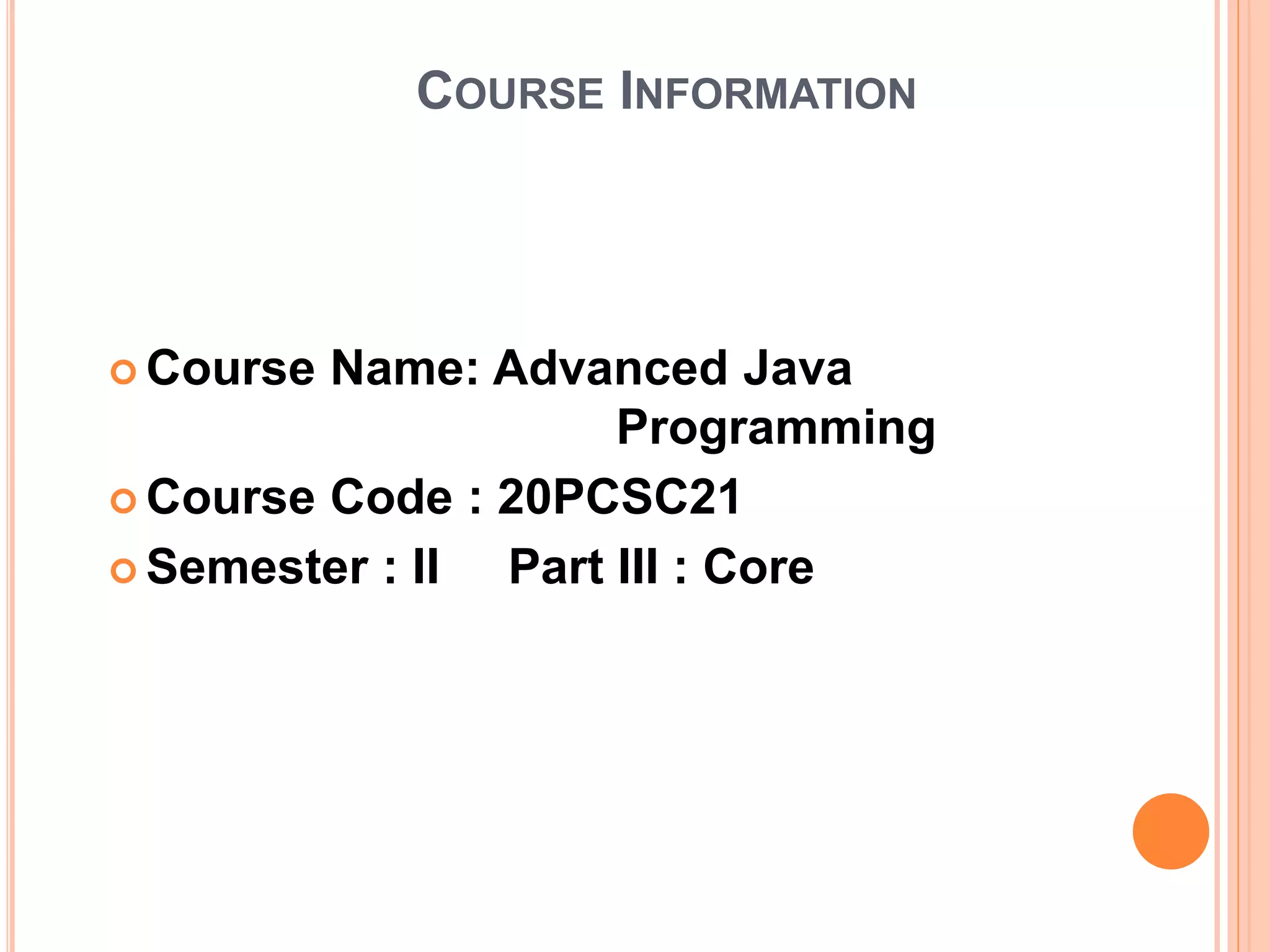
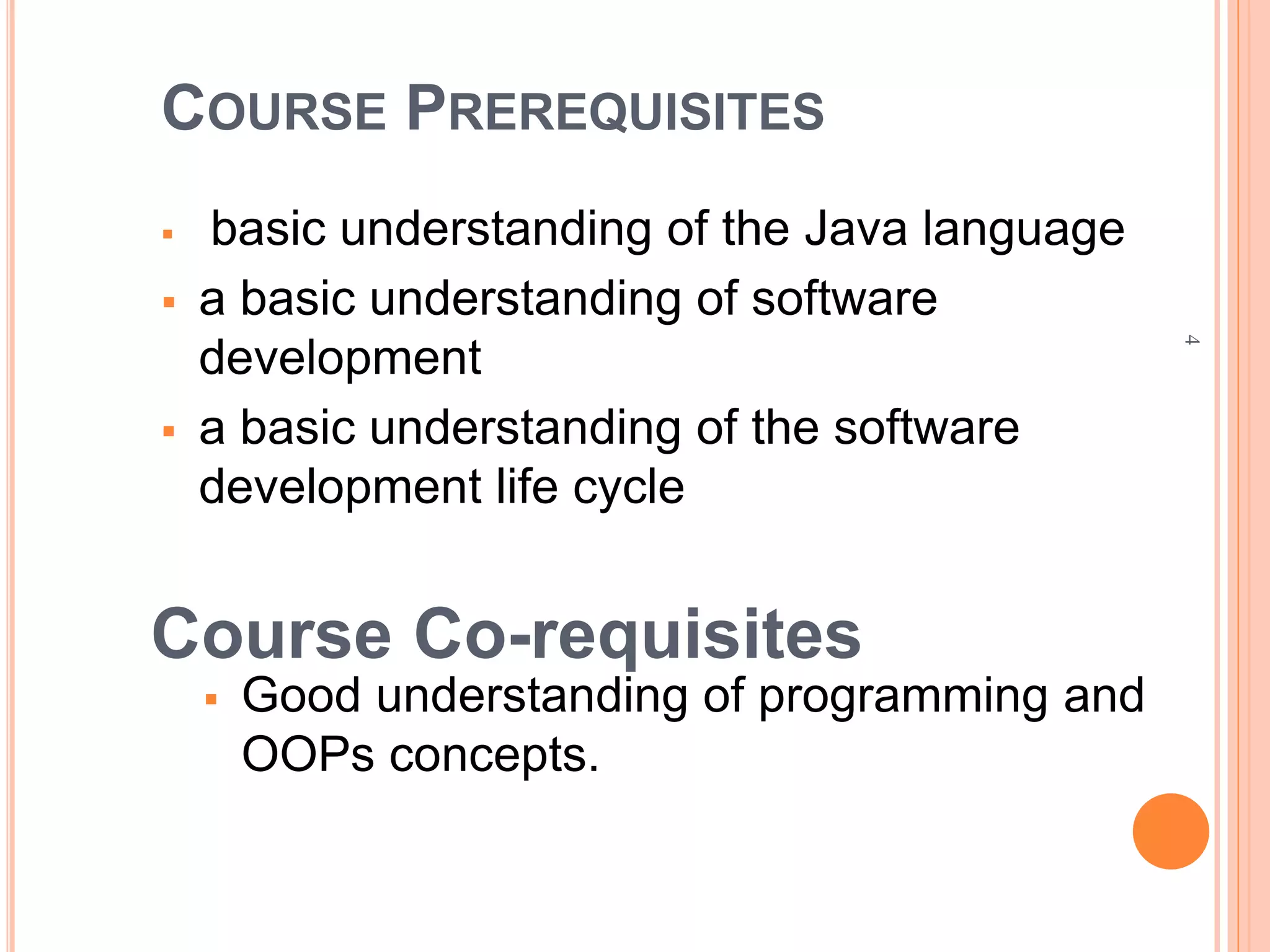
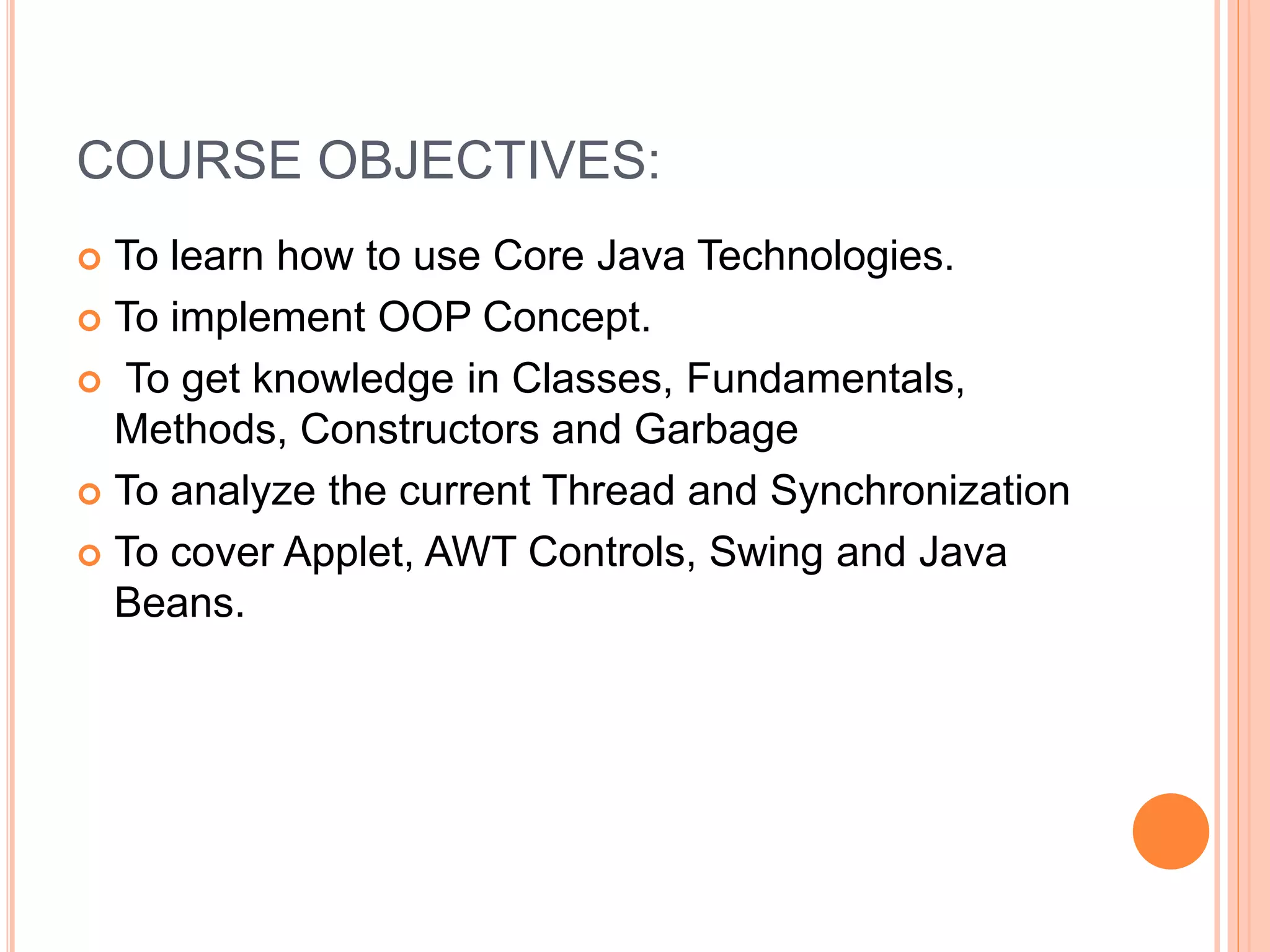
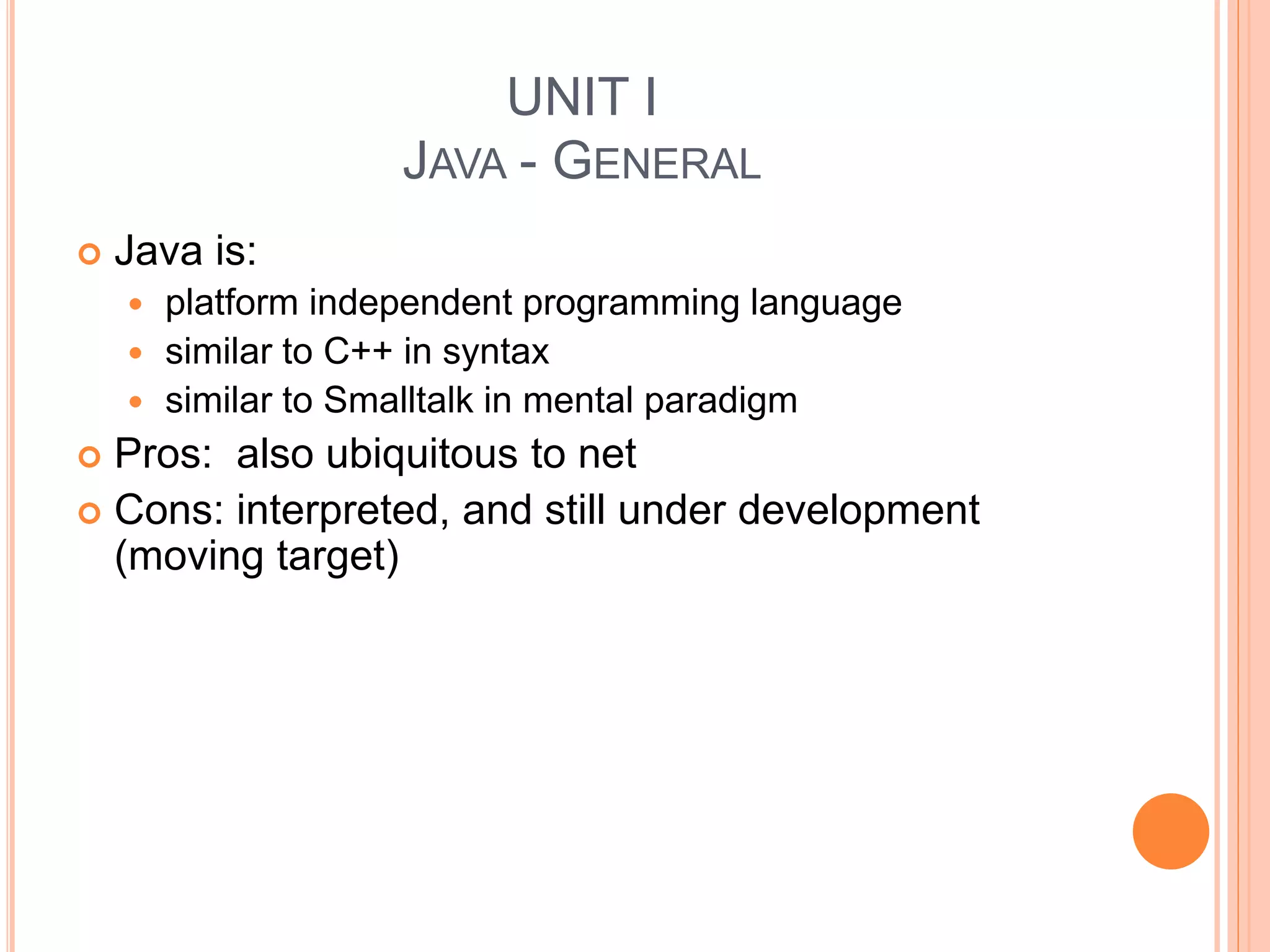
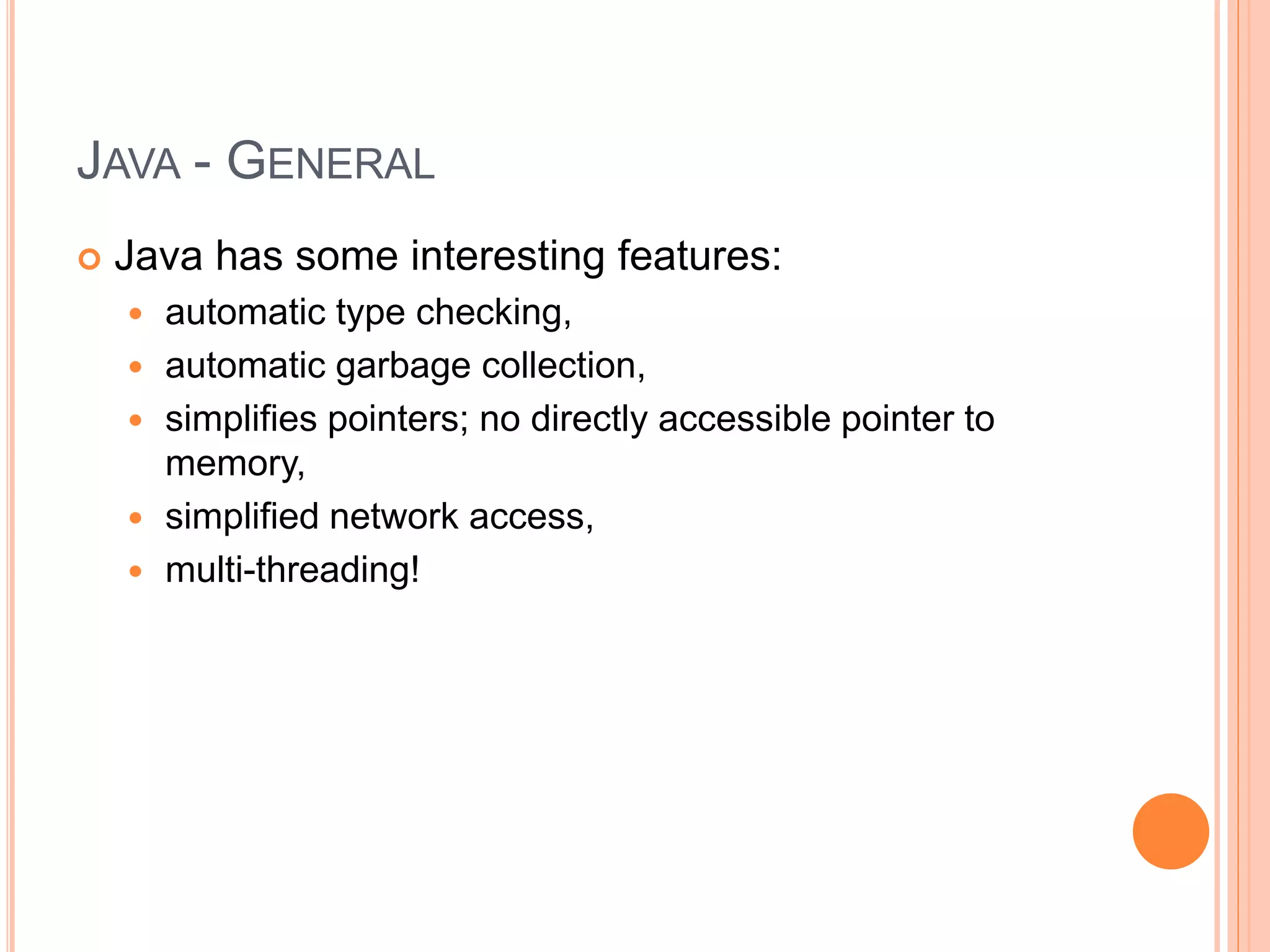
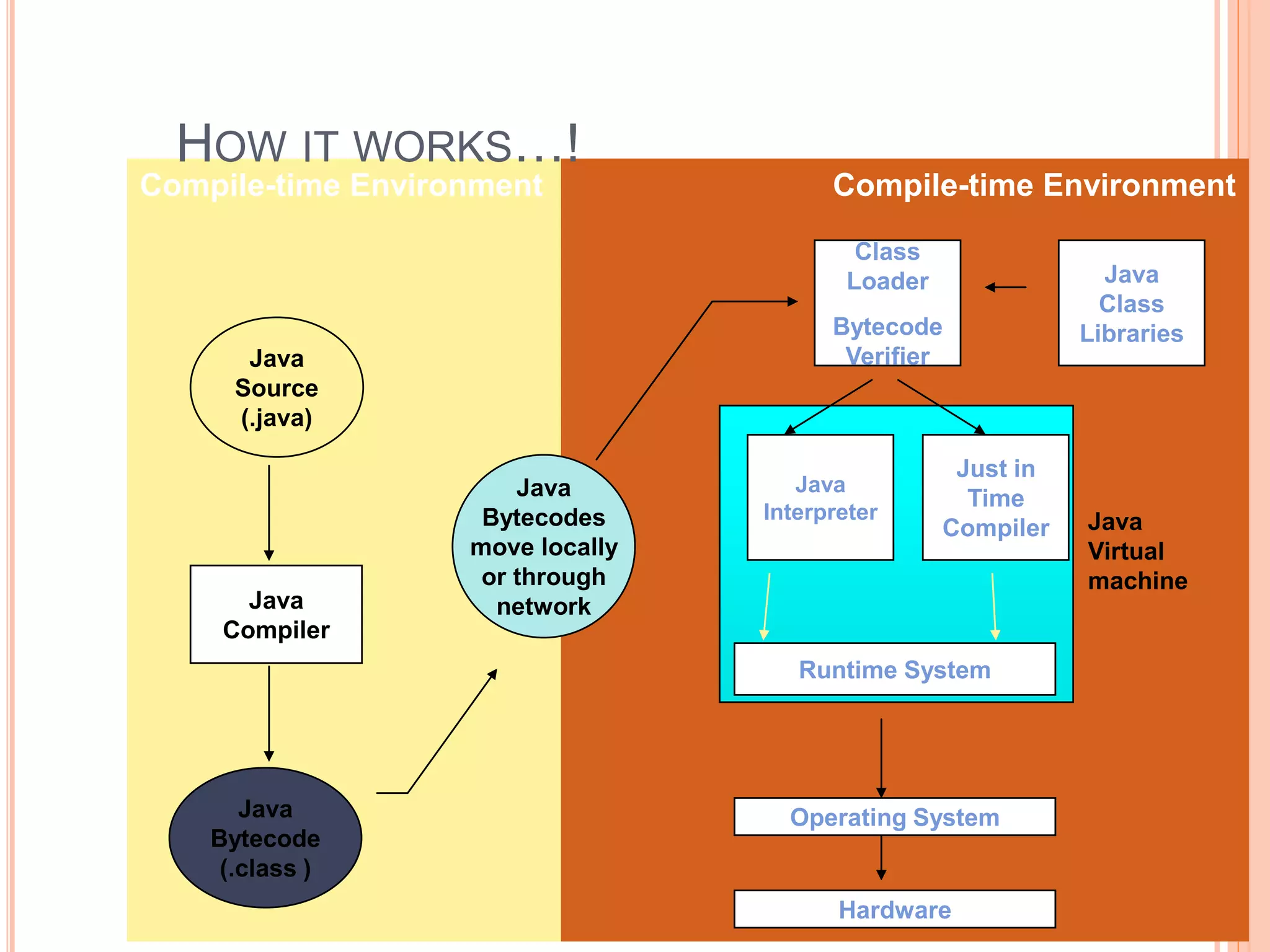
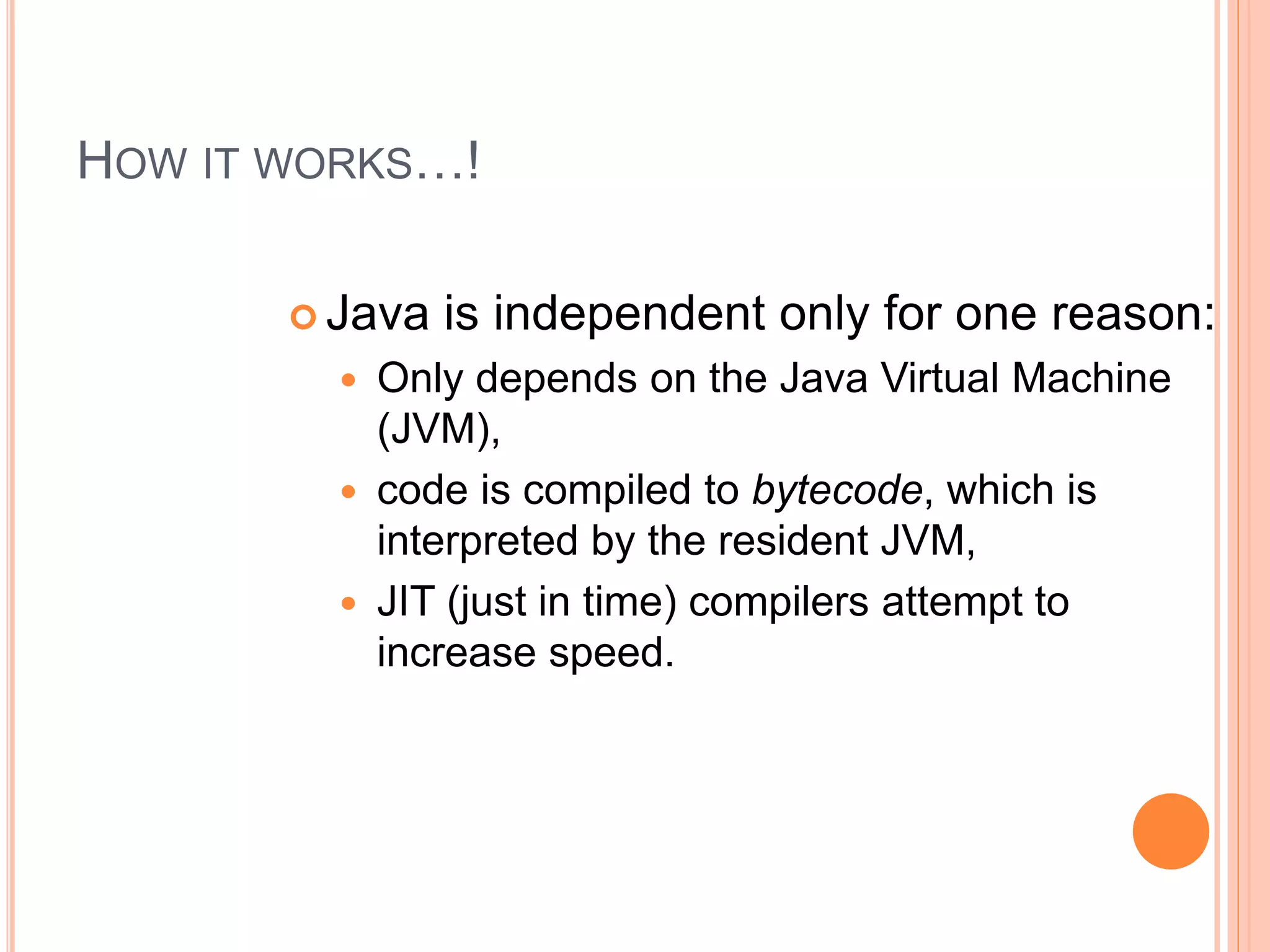
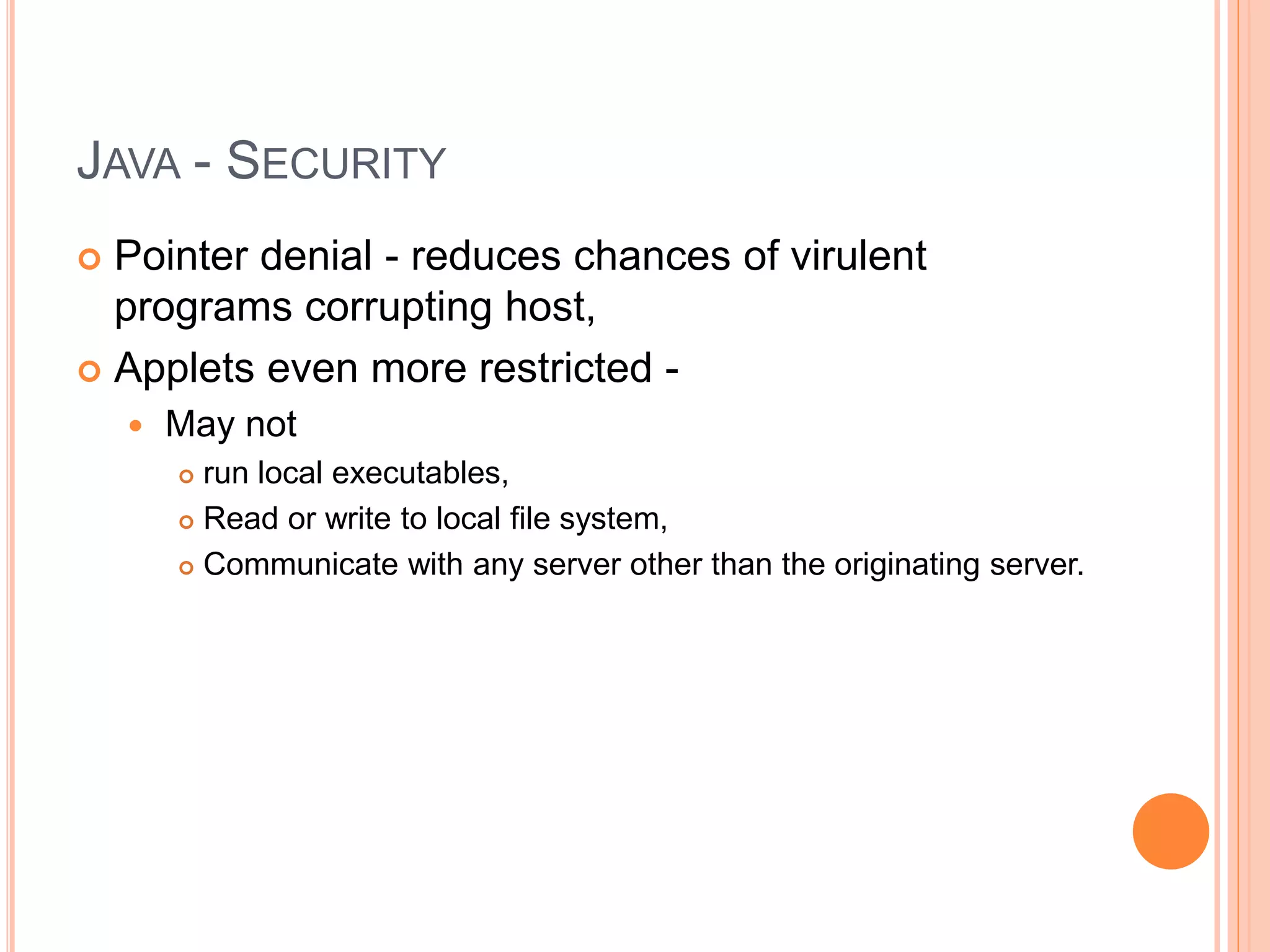
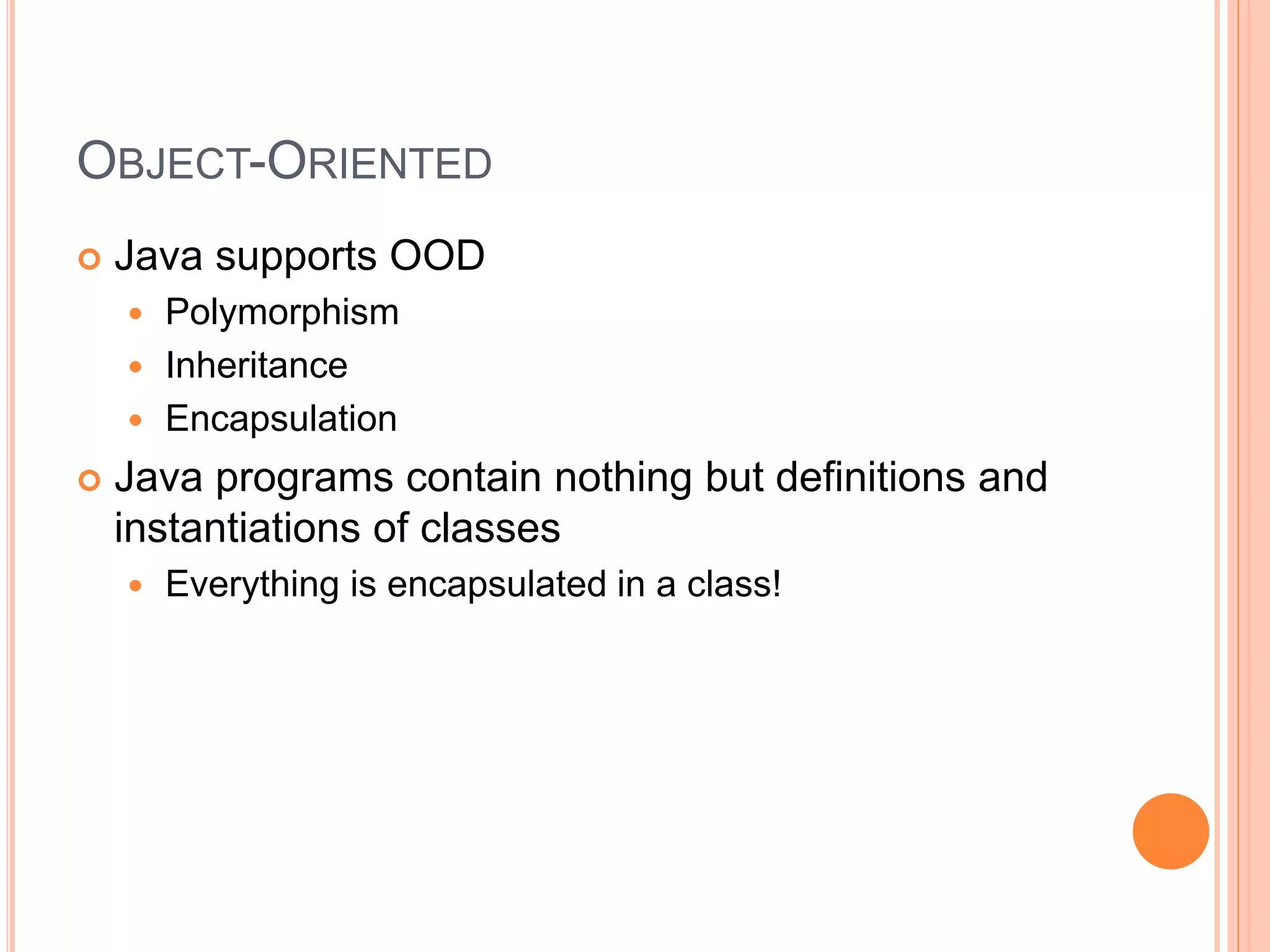
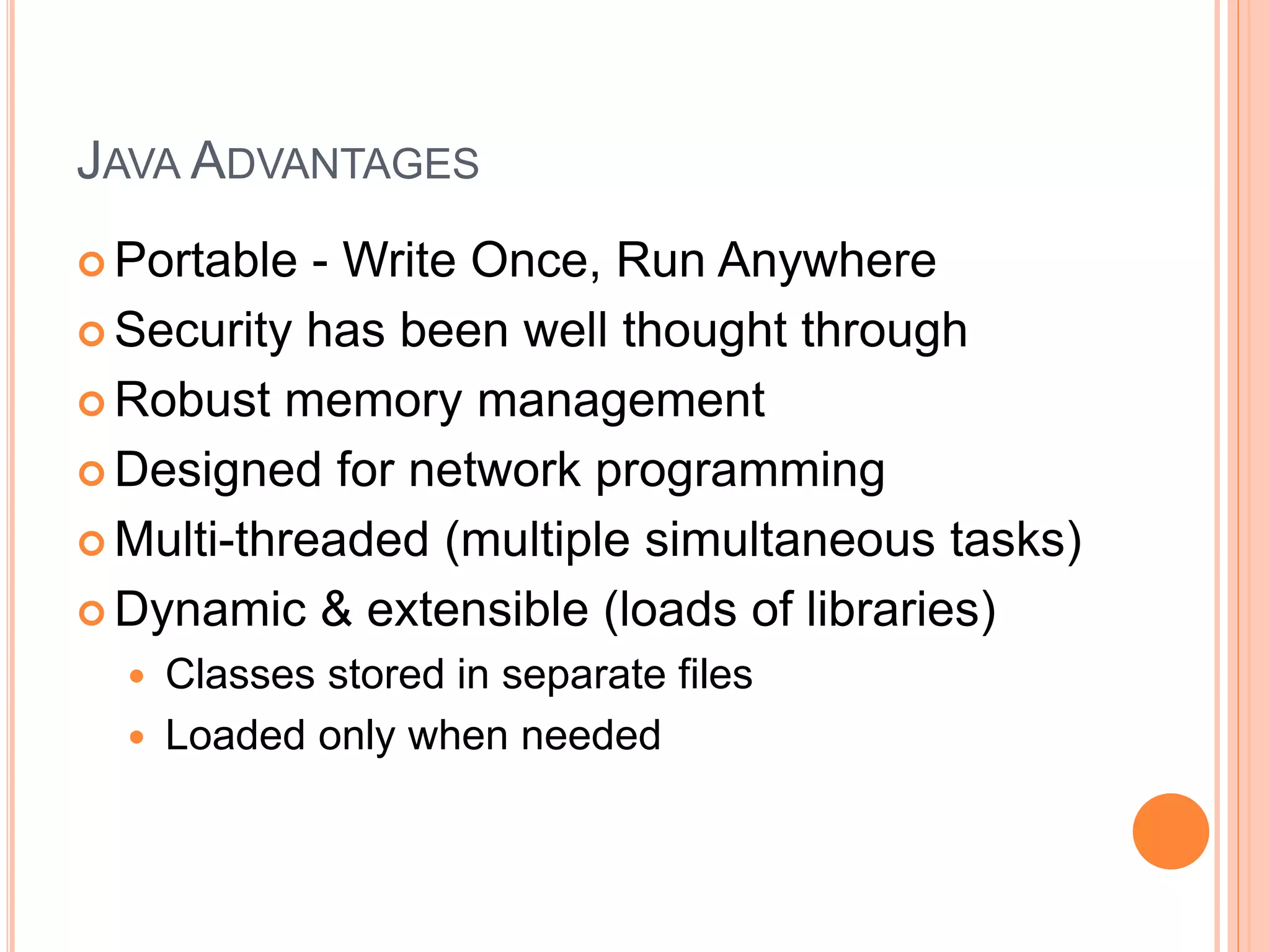
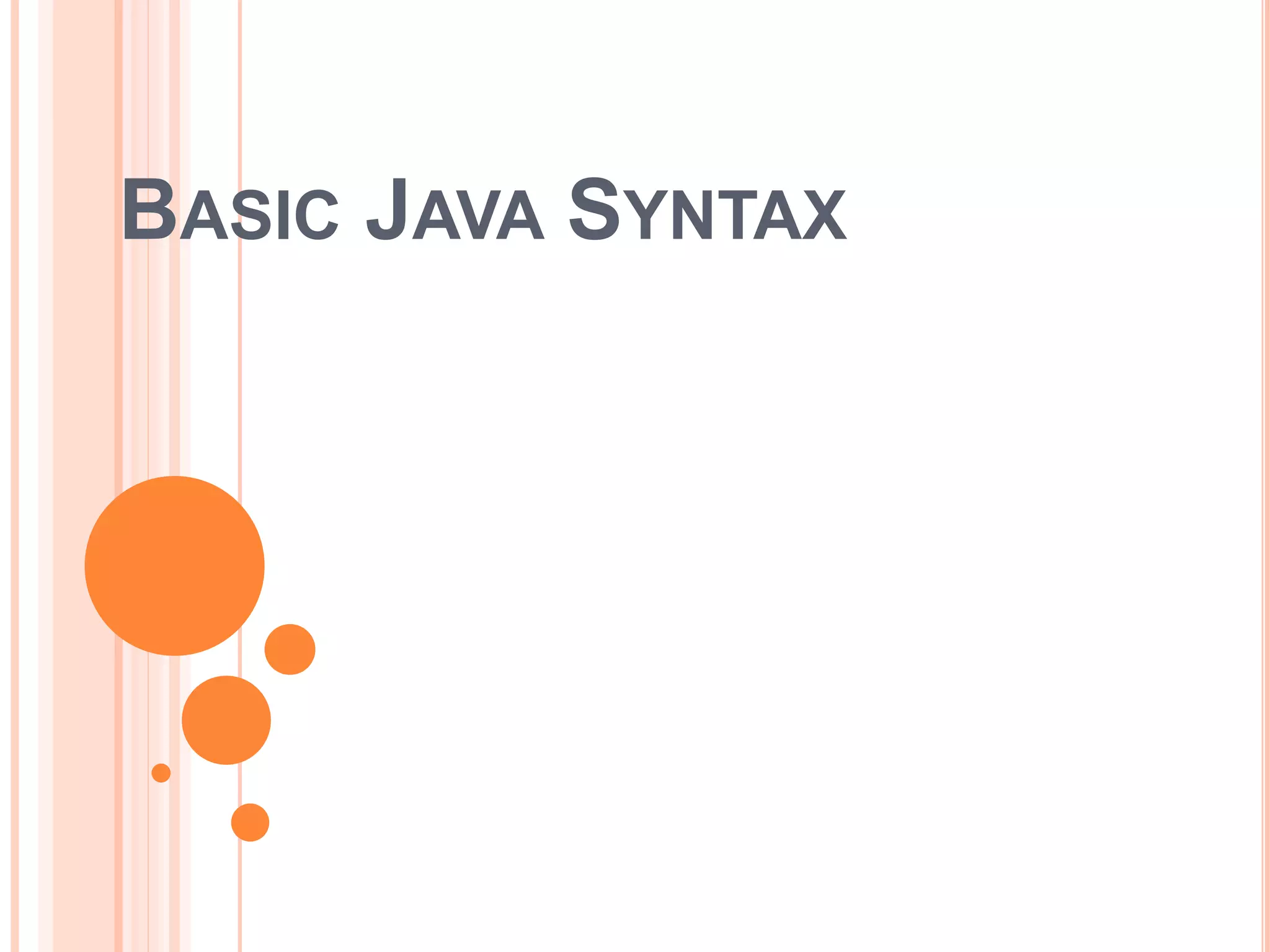
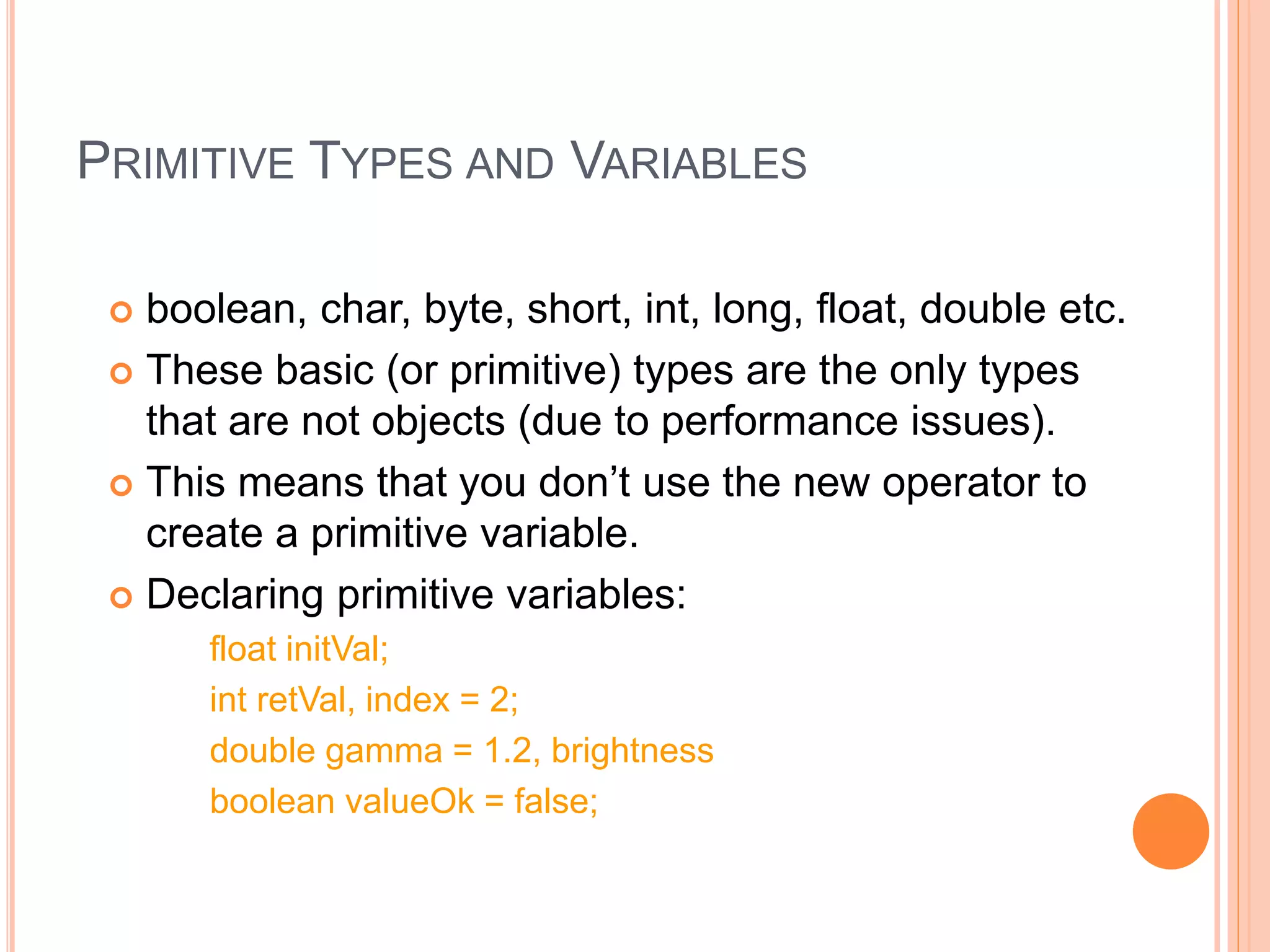
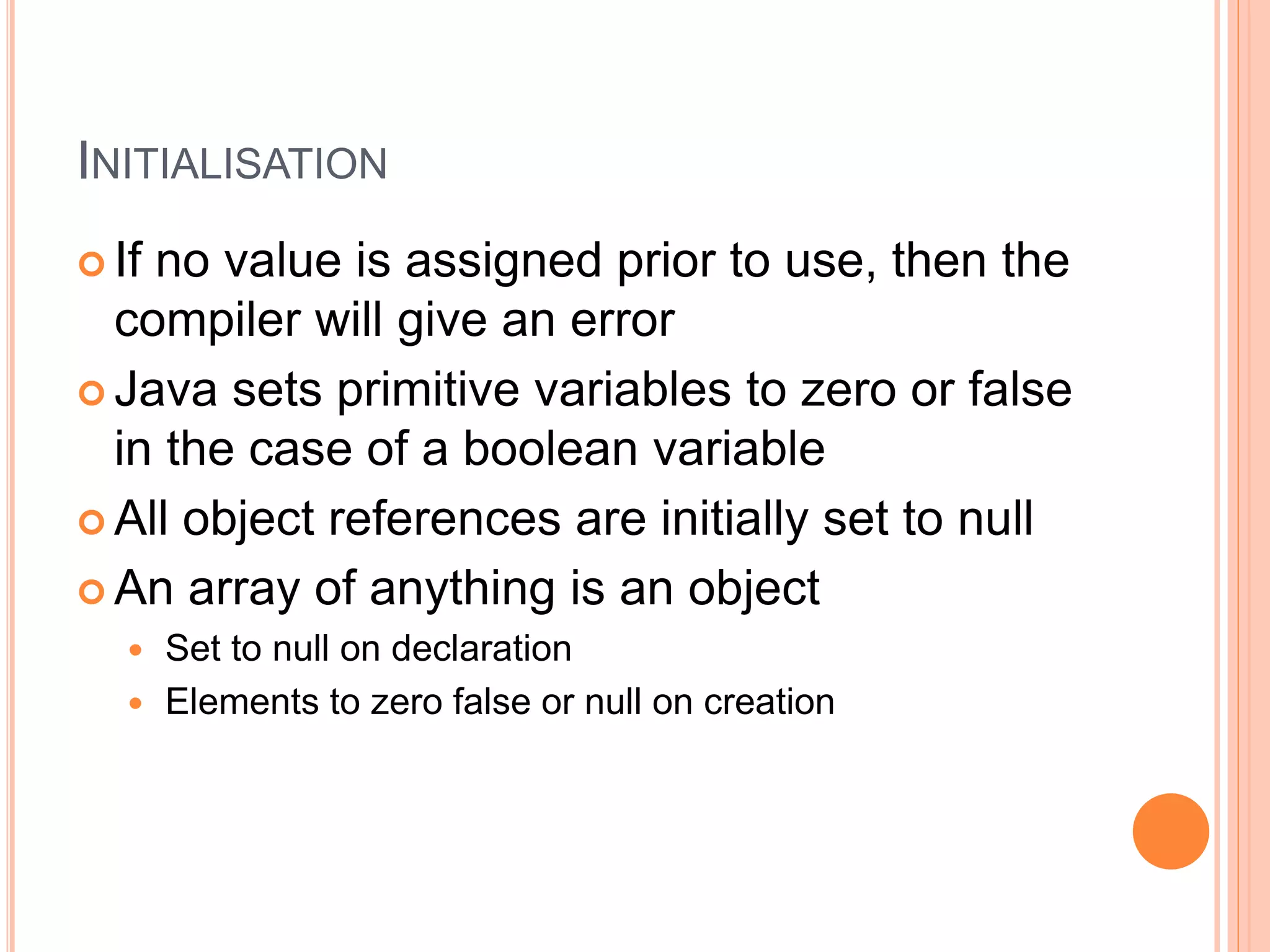
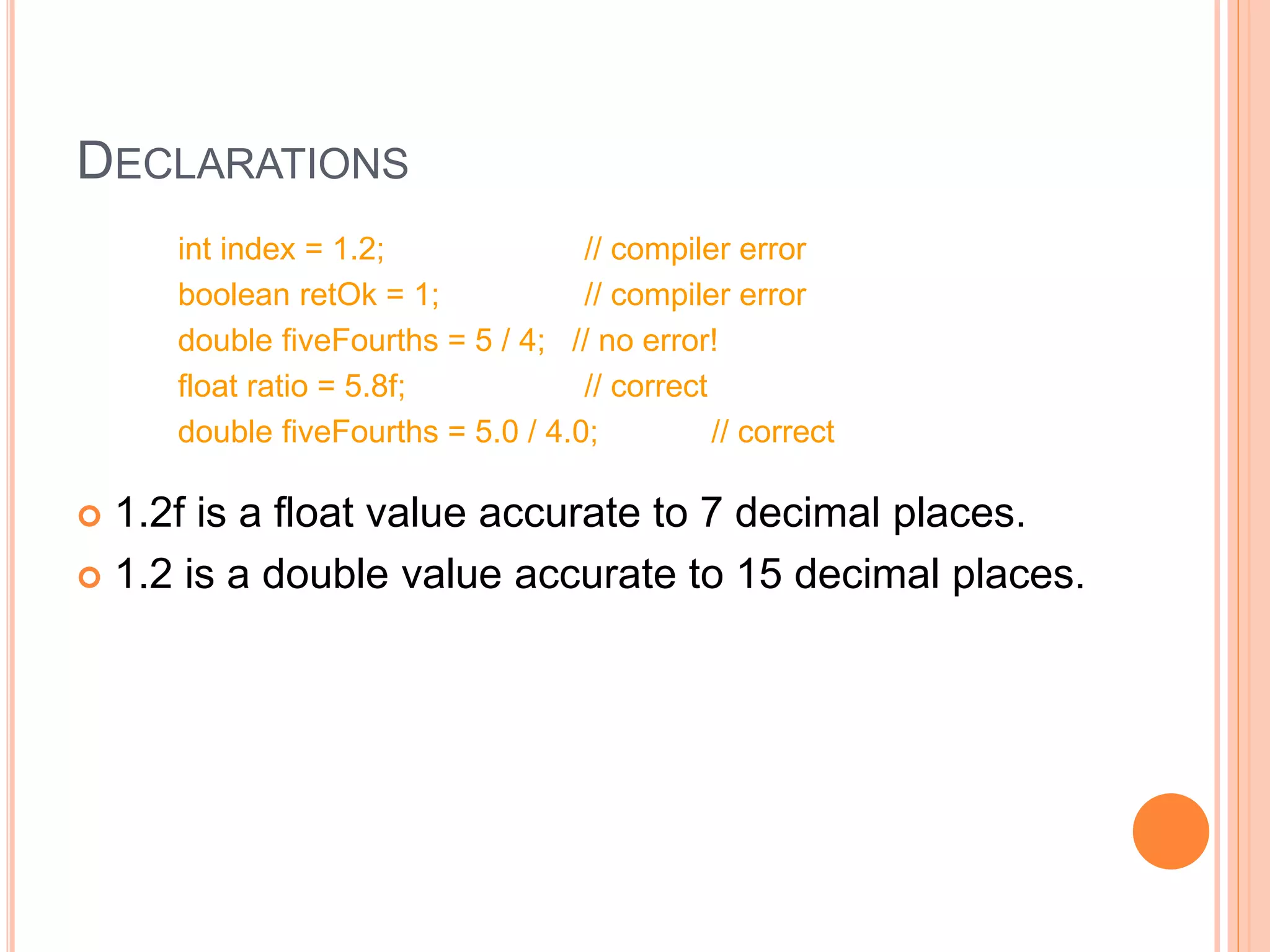
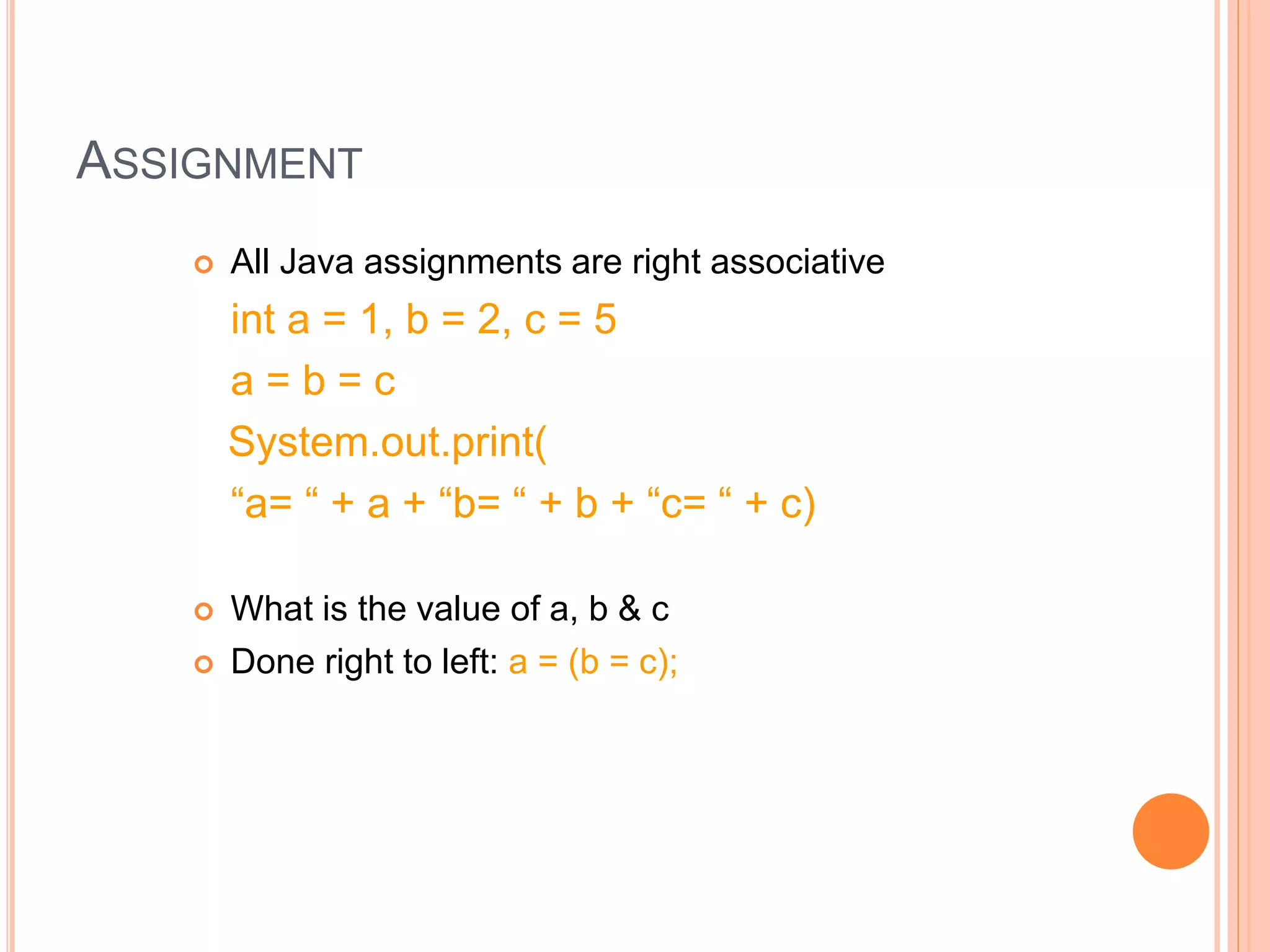
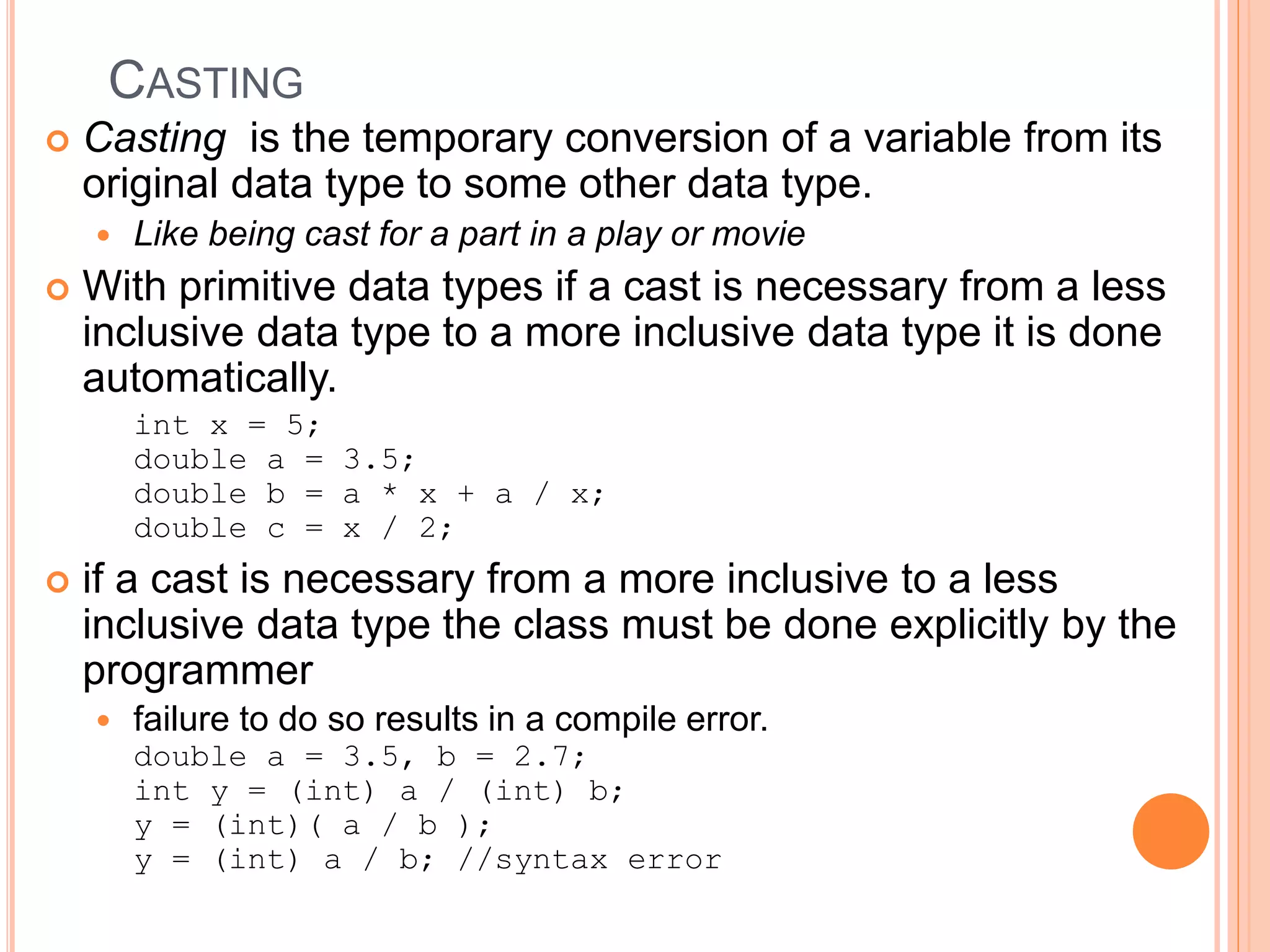
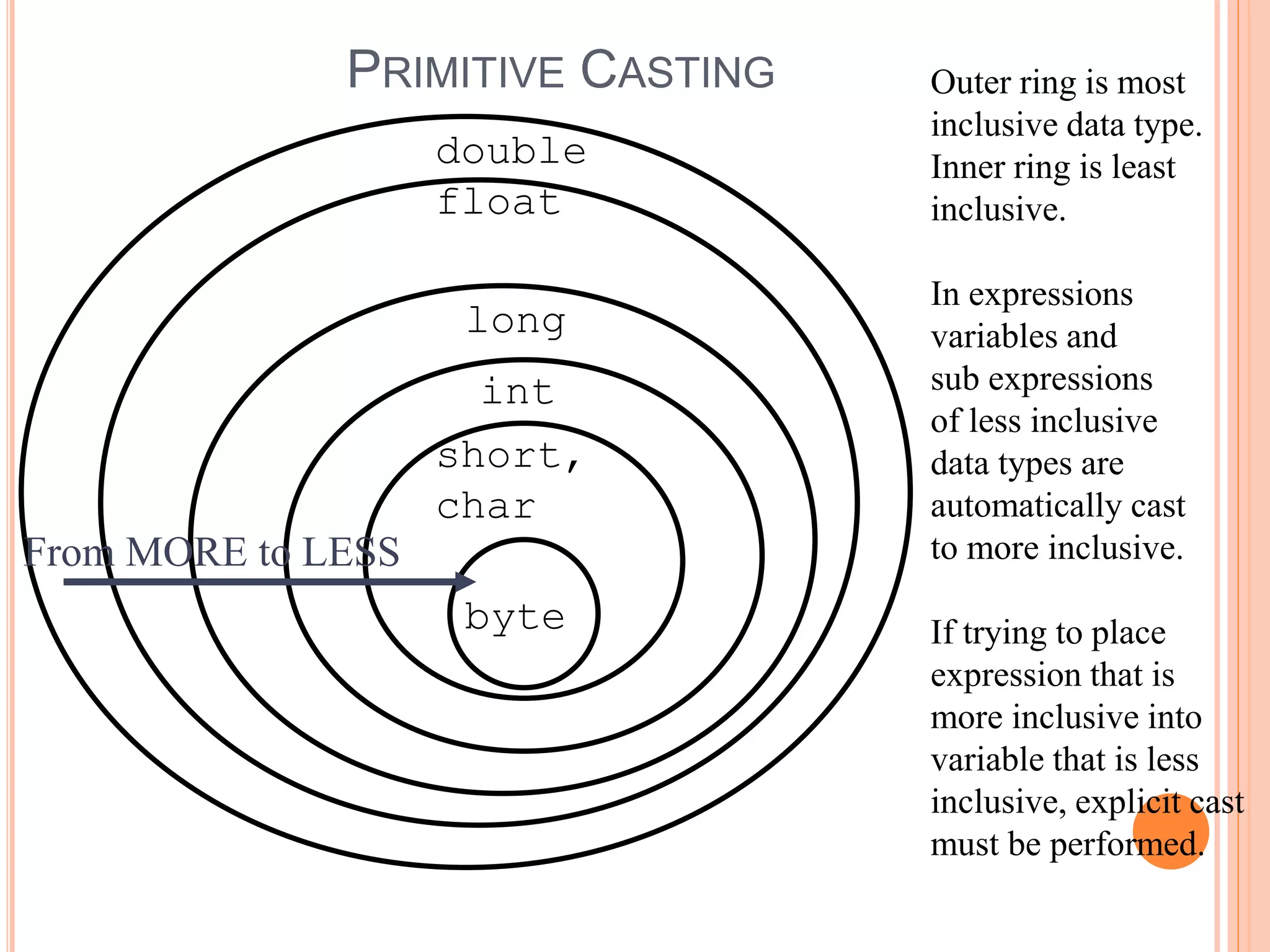
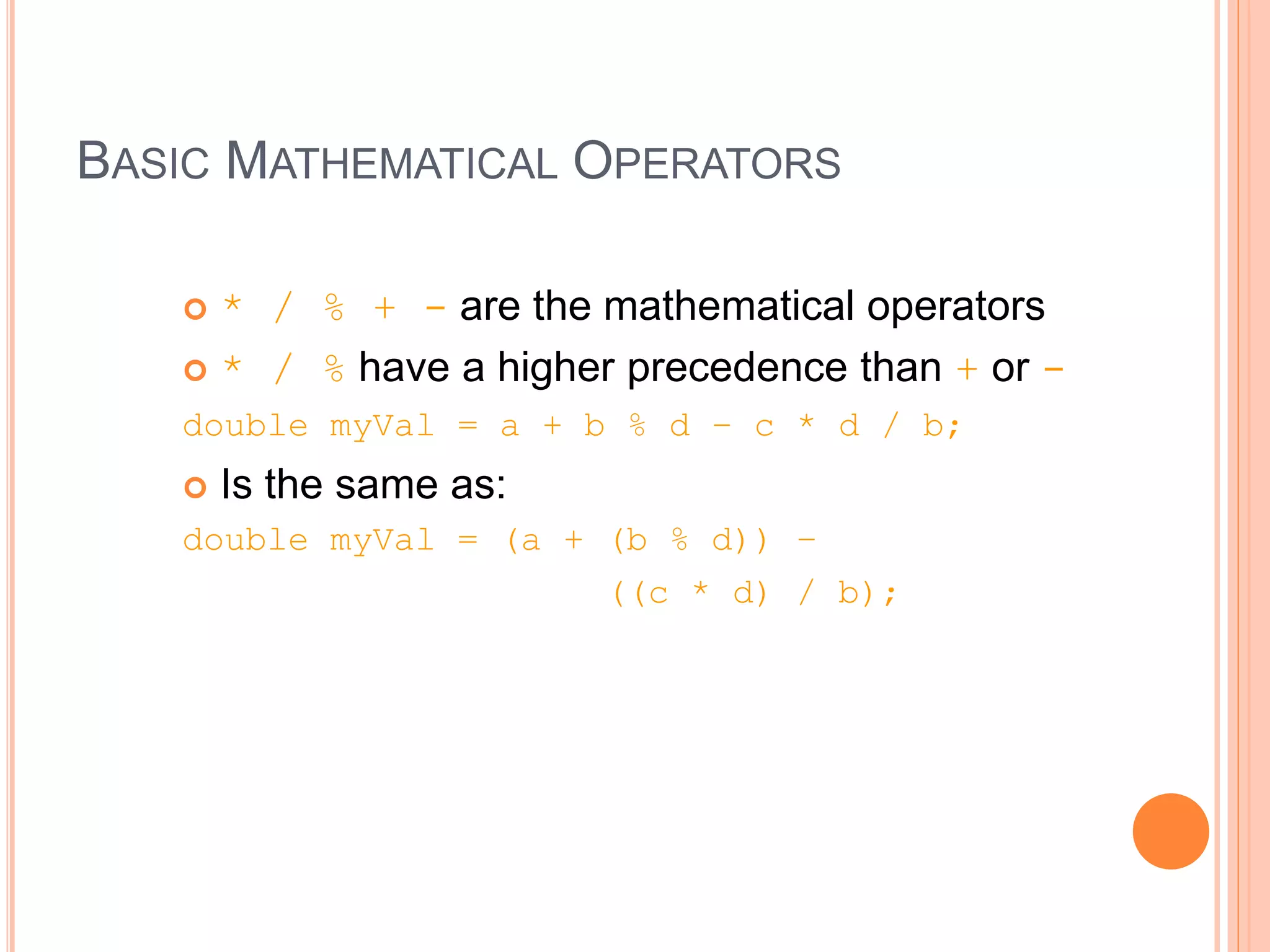
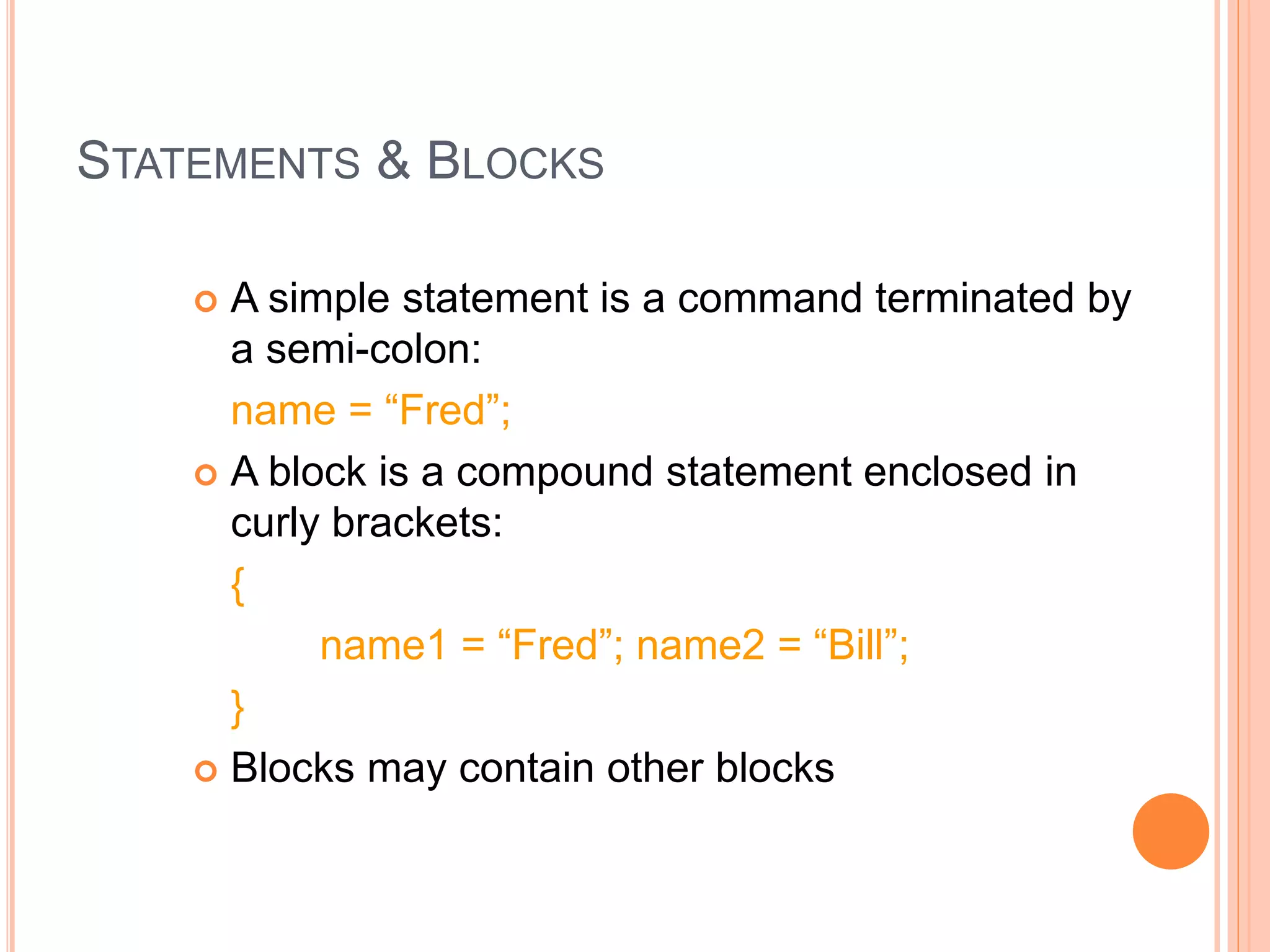
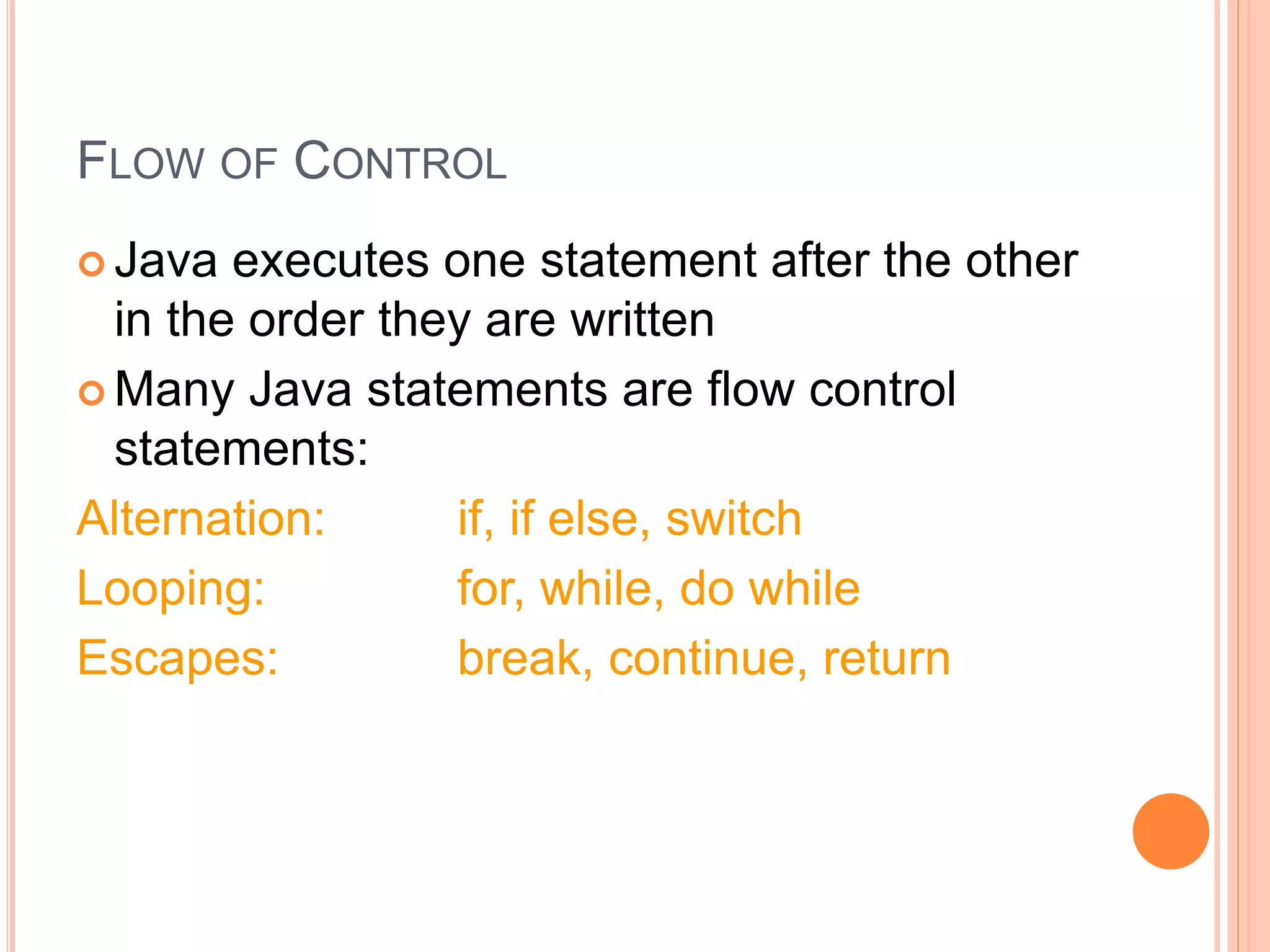
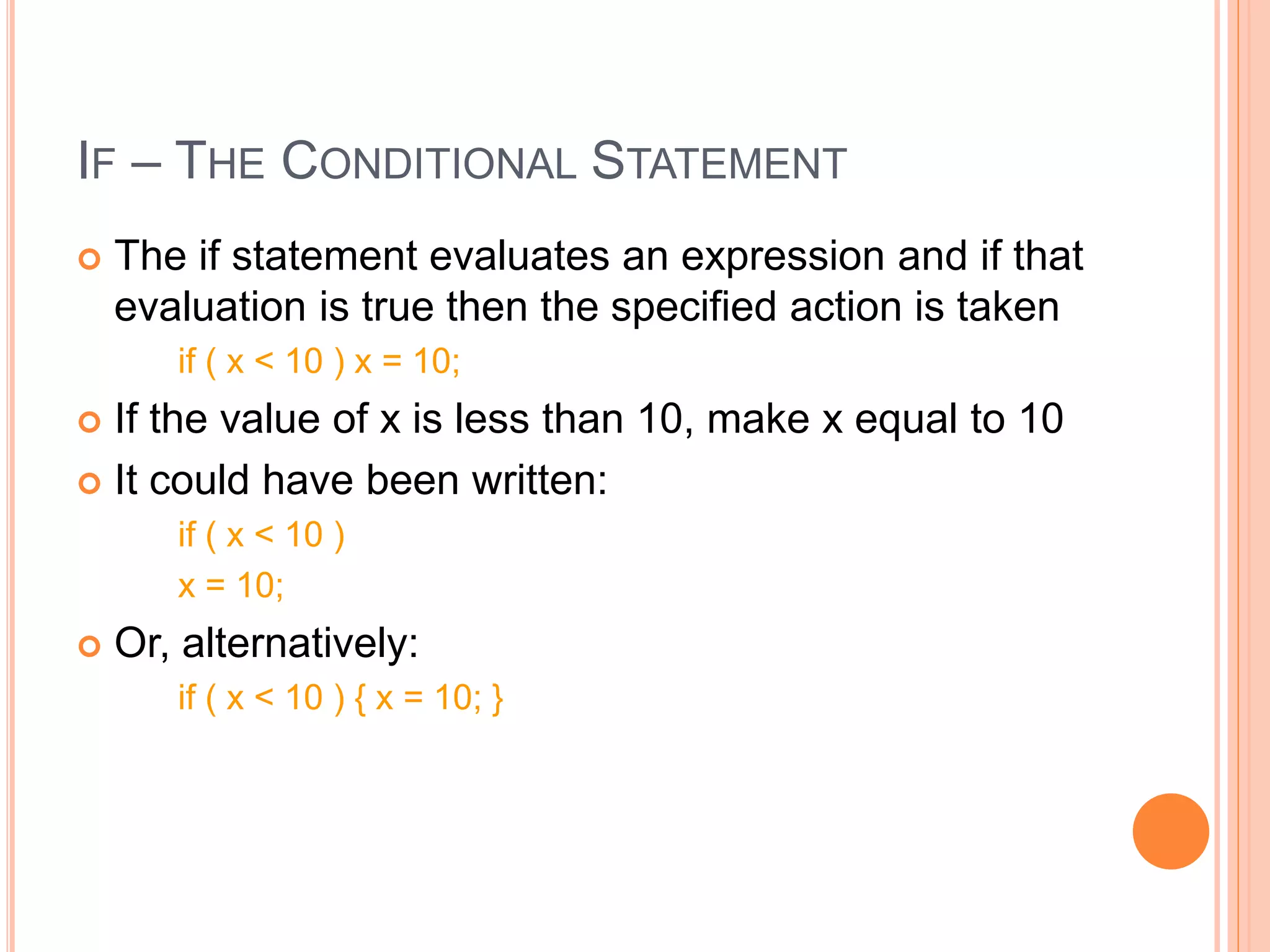
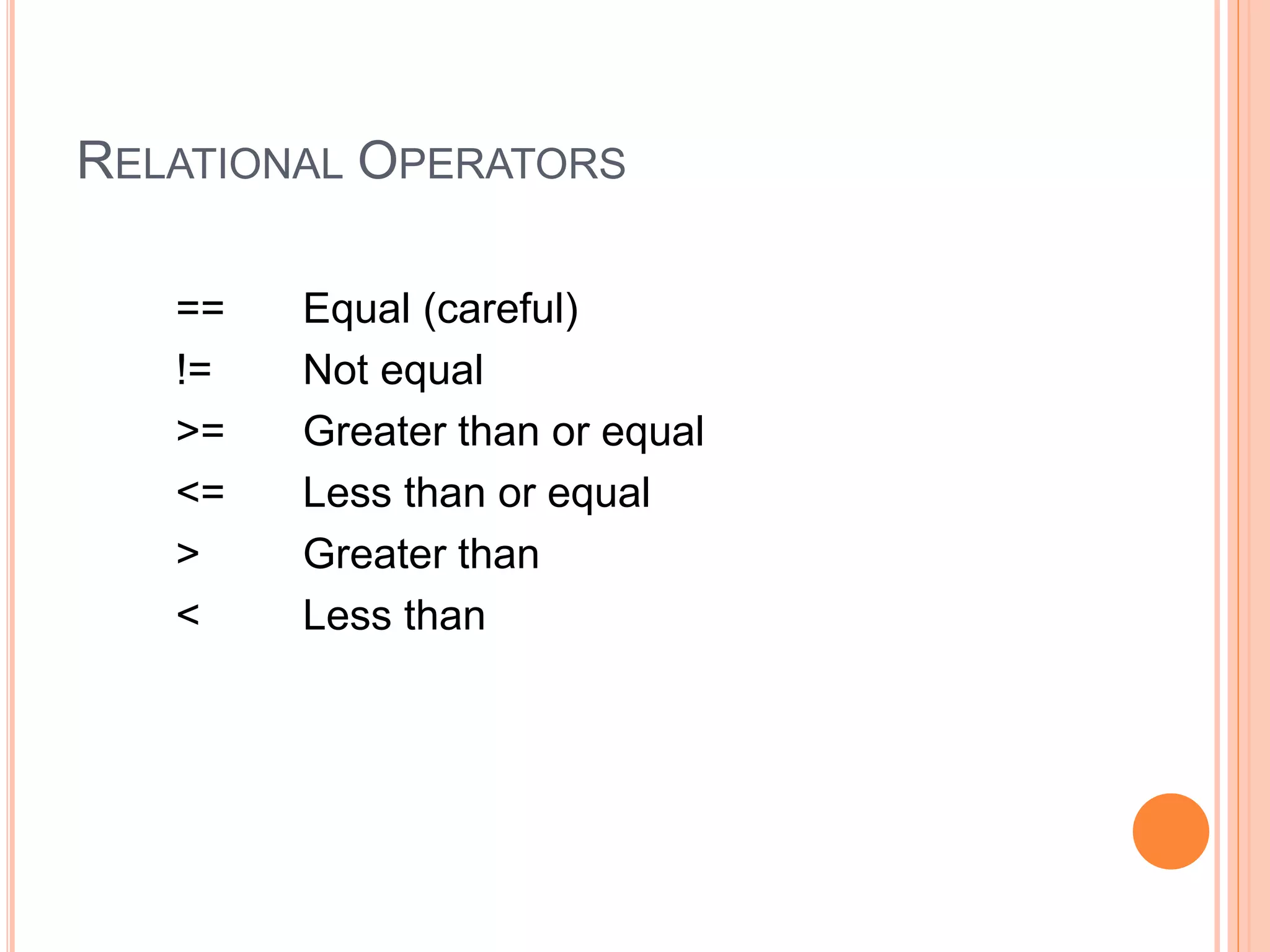
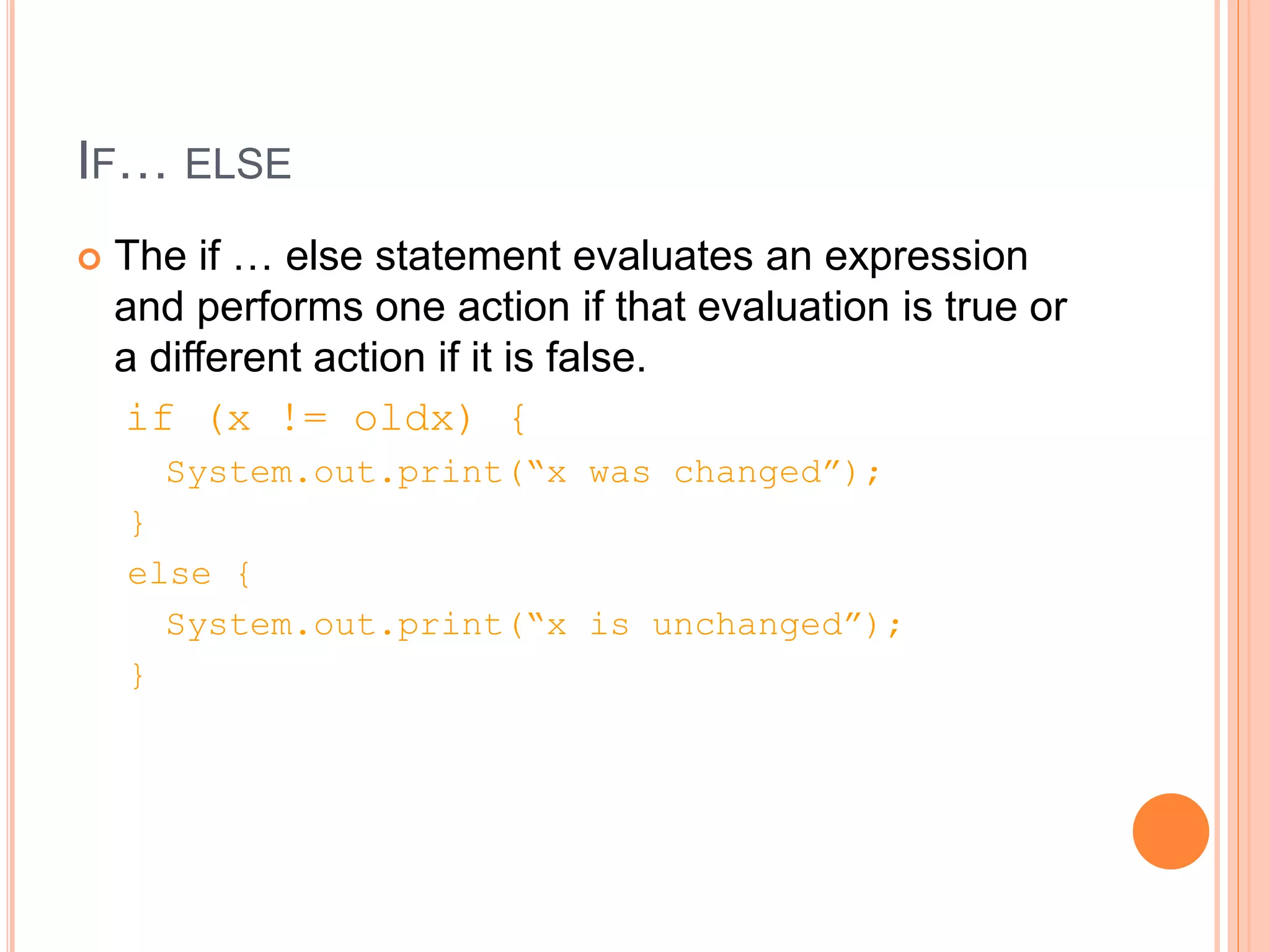
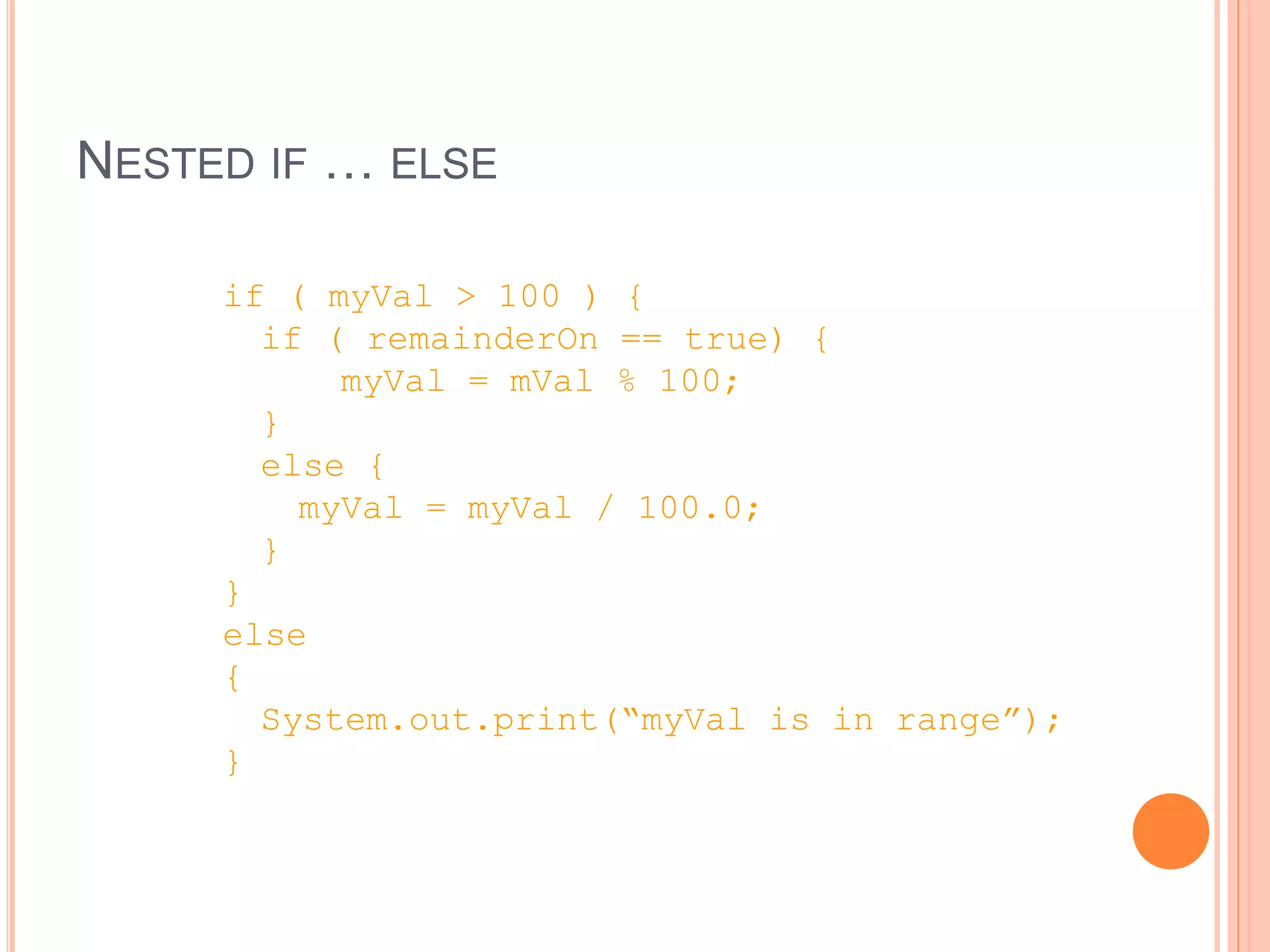
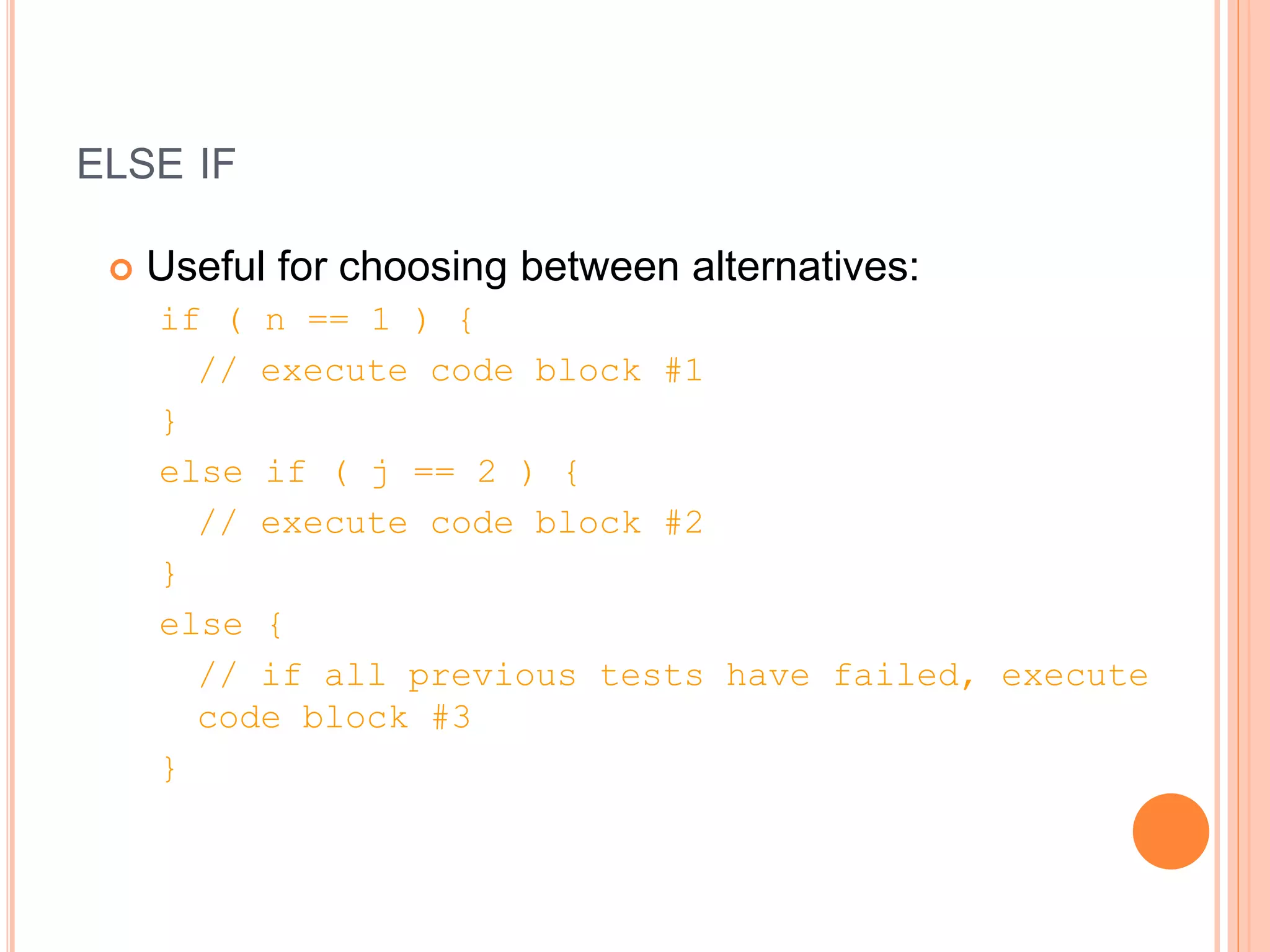
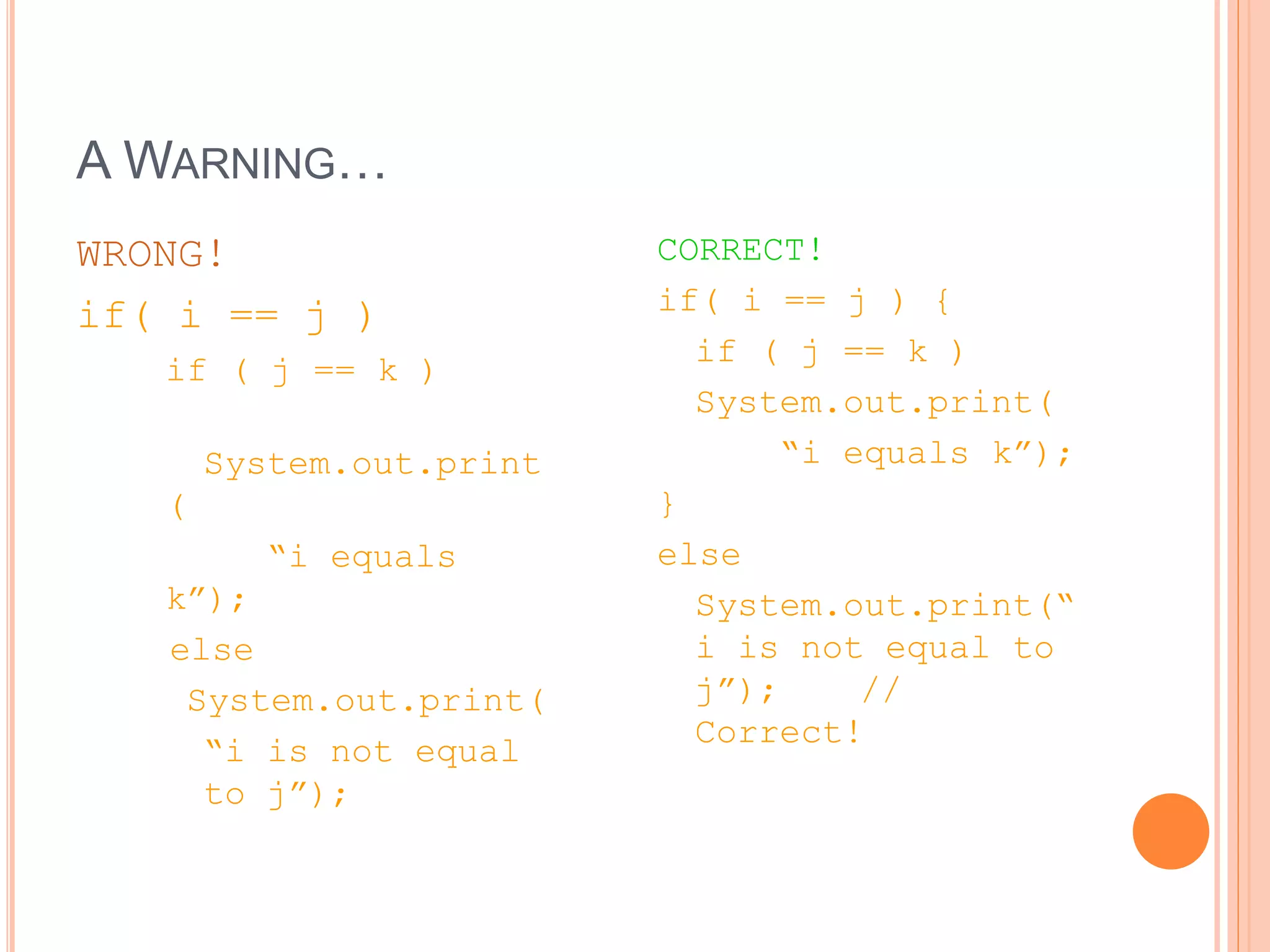
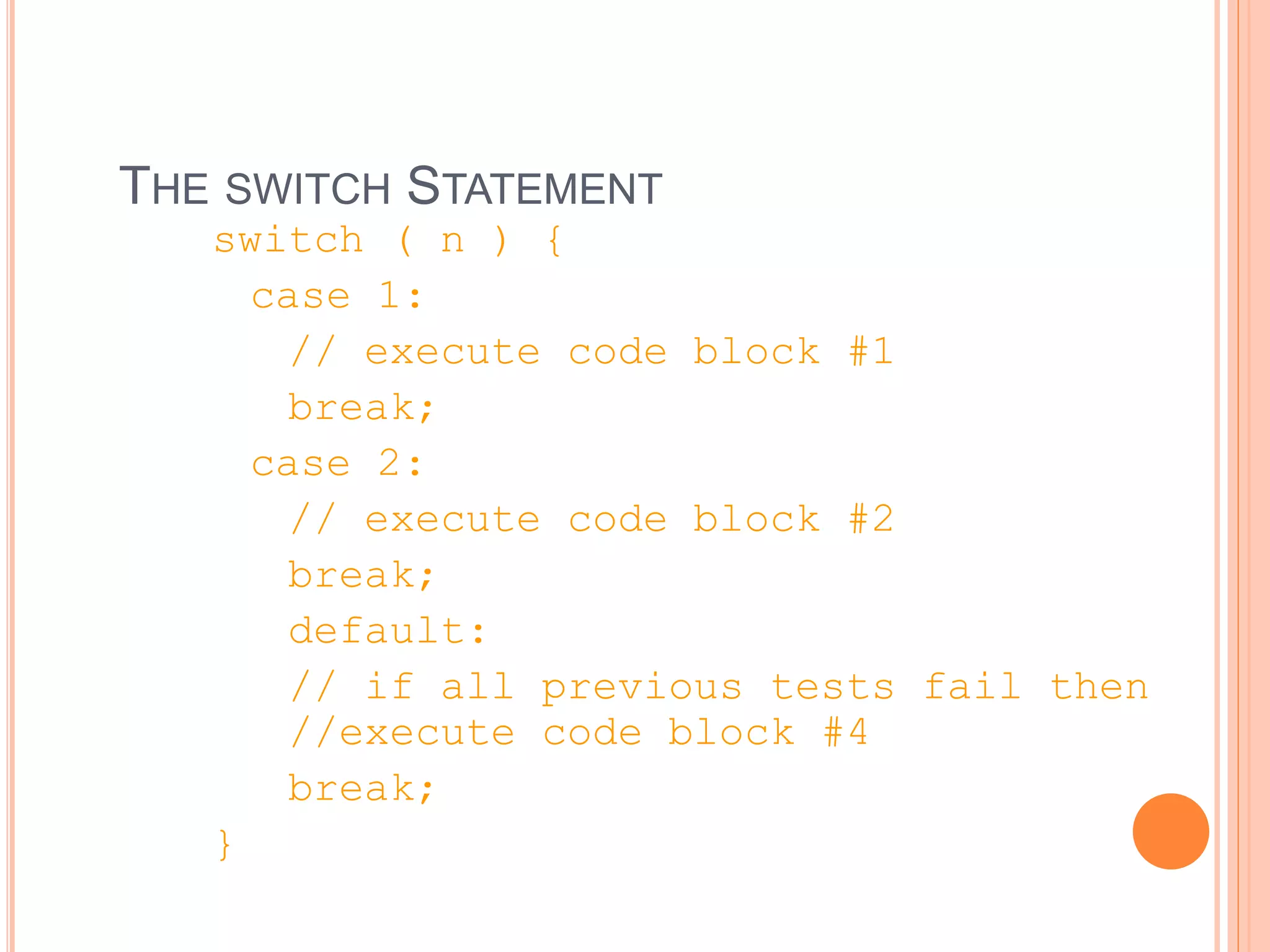
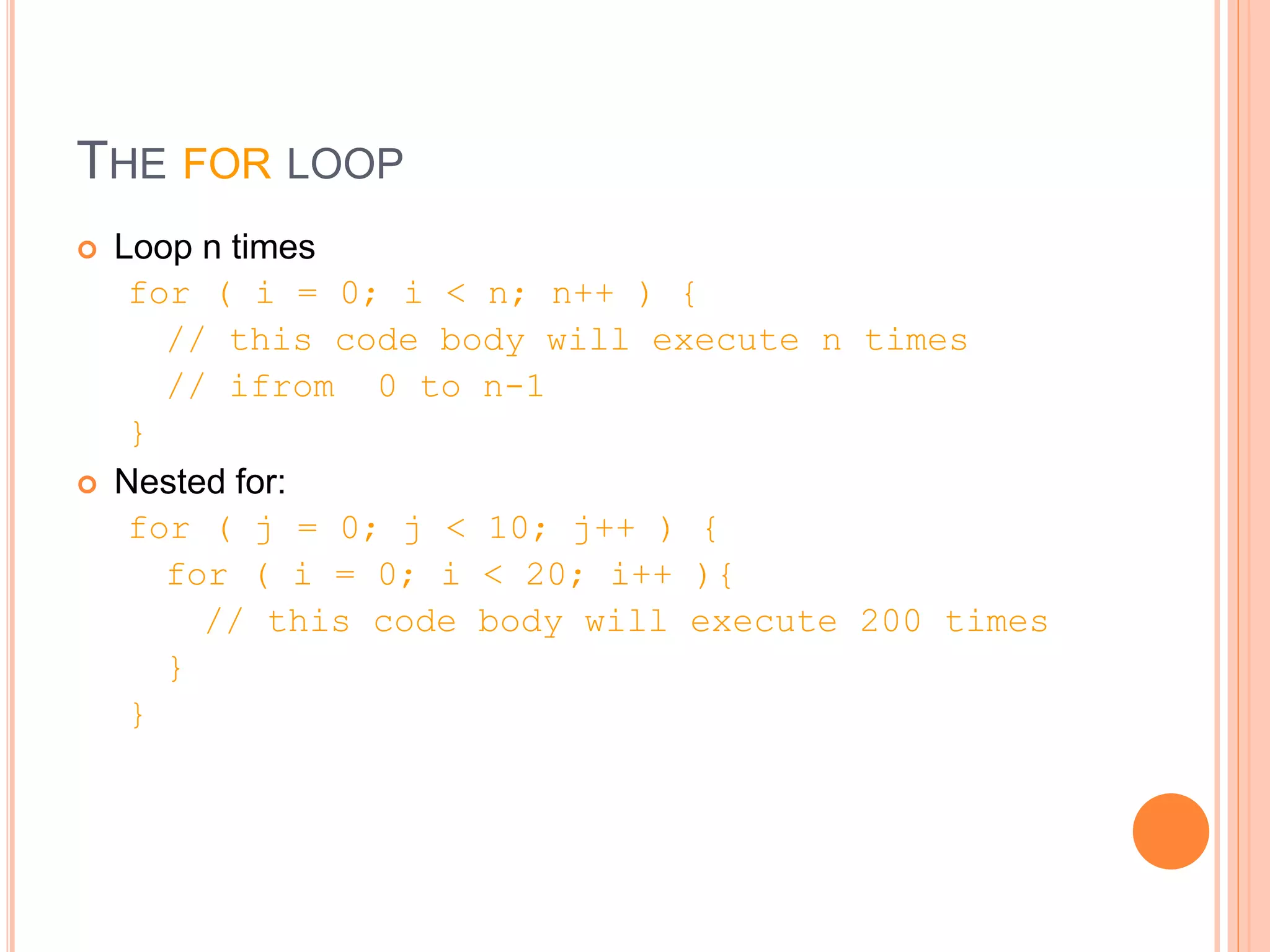
![WHILE LOOPS
while(response == 1) {
System.out.print( “ID =” + userID[n]);
n++;
response = readInt( “Enter “);
}
What is the minimum number of times the loop
is executed?
What is the maximum number of times?](https://image.slidesharecdn.com/uniti-advancedjavaprogrammingcourse-220321055128/75/Unit-I-Advanced-Java-Programming-Course-31-2048.jpg)
![DO {… } WHILE LOOPS
do {
System.out.print( “ID =” + userID[n] );
n++;
response = readInt( “Enter ” );
}while (response == 1);
What is the minimum number of times the loop
is executed?
What is the maximum number of times?](https://image.slidesharecdn.com/uniti-advancedjavaprogrammingcourse-220321055128/75/Unit-I-Advanced-Java-Programming-Course-32-2048.jpg)
![BREAK
A break statement causes an exit from the
innermost containing while, do, for or
switch statement.
for ( int i = 0; i < maxID, i++ ) {
if ( userID[i] == targetID ) {
index = i;
break;
}
} // program jumps here after break](https://image.slidesharecdn.com/uniti-advancedjavaprogrammingcourse-220321055128/75/Unit-I-Advanced-Java-Programming-Course-33-2048.jpg)
![CONTINUE
Can only be used with while, do or for.
The continue statement causes the innermost loop
to start the next iteration immediately
for ( int i = 0; i < maxID; i++ ) {
if ( userID[i] != -1 ) continue;
System.out.print( “UserID ” + i + “ :” +
userID);
}](https://image.slidesharecdn.com/uniti-advancedjavaprogrammingcourse-220321055128/75/Unit-I-Advanced-Java-Programming-Course-34-2048.jpg)
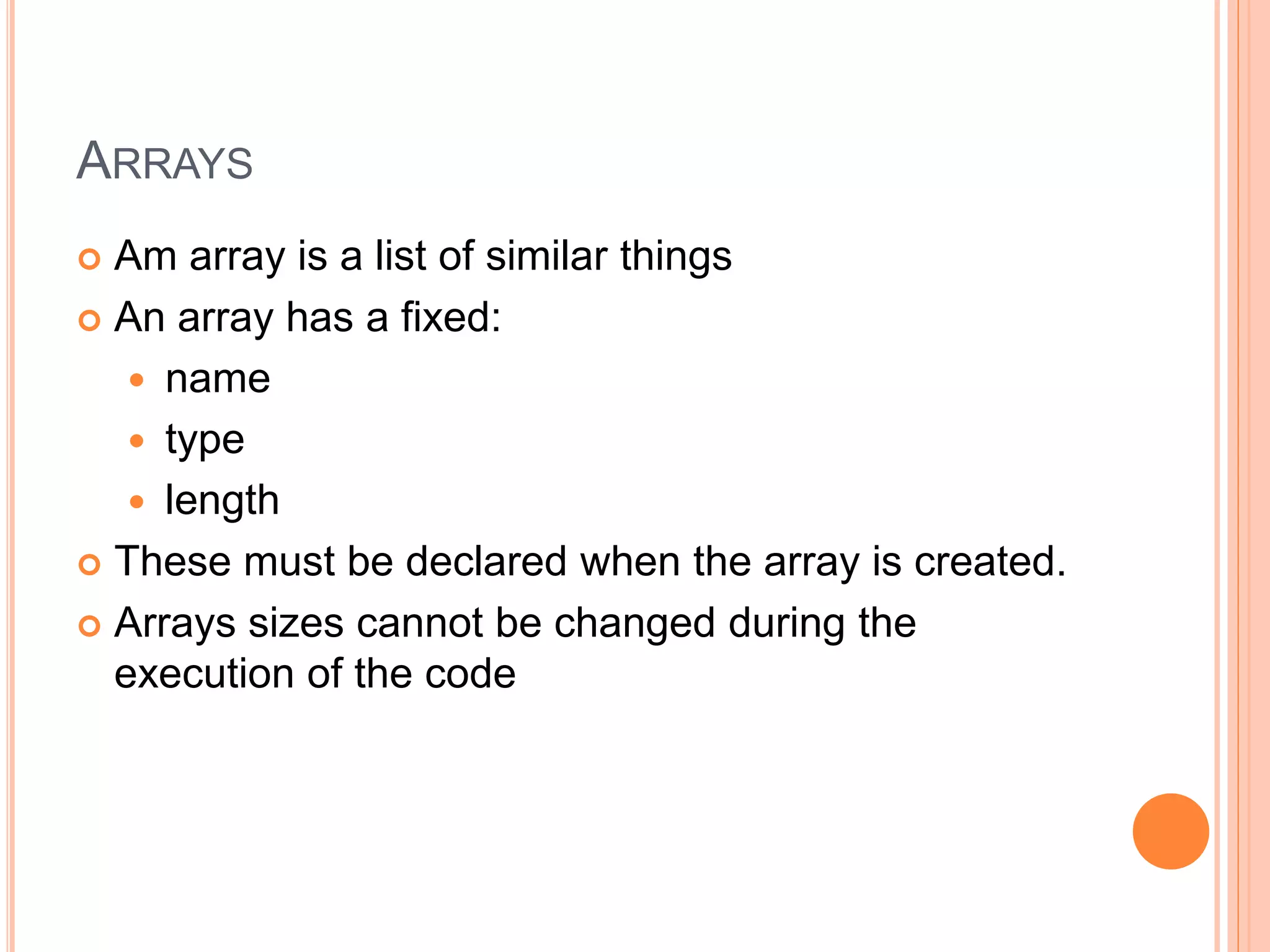
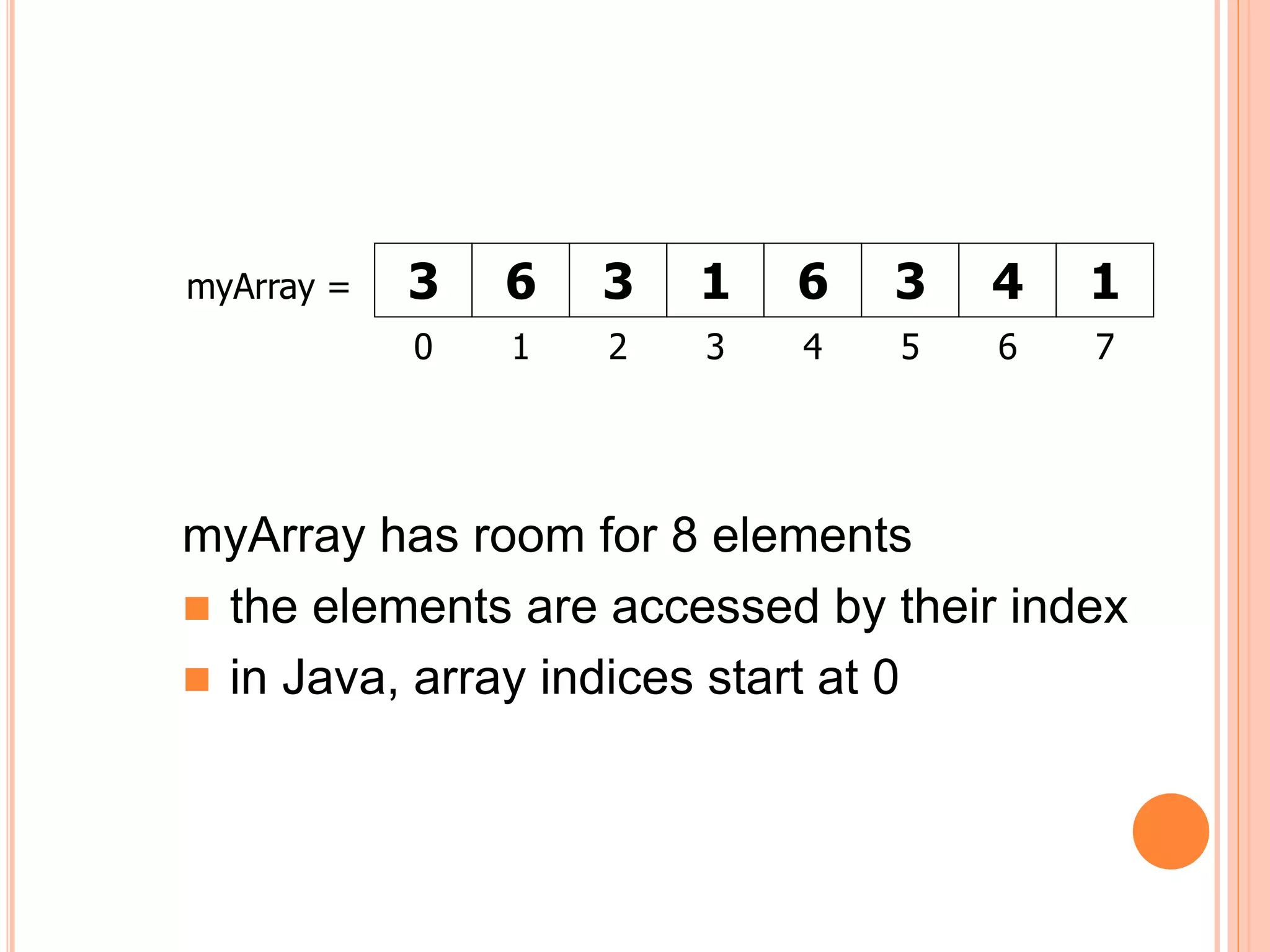
![DECLARING ARRAYS
int myArray[];
declares myArray to be an array of integers
myArray = new int[8];
sets up 8 integer-sized spaces in memory, labelled
myArray[0] to myArray[7]
int myArray[] = new int[8];
combines the two statements in one line](https://image.slidesharecdn.com/uniti-advancedjavaprogrammingcourse-220321055128/75/Unit-I-Advanced-Java-Programming-Course-37-2048.jpg)
![ASSIGNING VALUES
refer to the array elements by index to store values
in them.
myArray[0] = 3;
myArray[1] = 6;
myArray[2] = 3; ...
can create and initialise in one step:
int myArray[] = {3, 6, 3, 1, 6, 3, 4, 1};](https://image.slidesharecdn.com/uniti-advancedjavaprogrammingcourse-220321055128/75/Unit-I-Advanced-Java-Programming-Course-38-2048.jpg)
![ITERATING THROUGH ARRAYS
for loops are useful when dealing with arrays:
for (int i = 0; i < myArray.length; i++) {
myArray[i] = getsomevalue();
}](https://image.slidesharecdn.com/uniti-advancedjavaprogrammingcourse-220321055128/75/Unit-I-Advanced-Java-Programming-Course-39-2048.jpg)
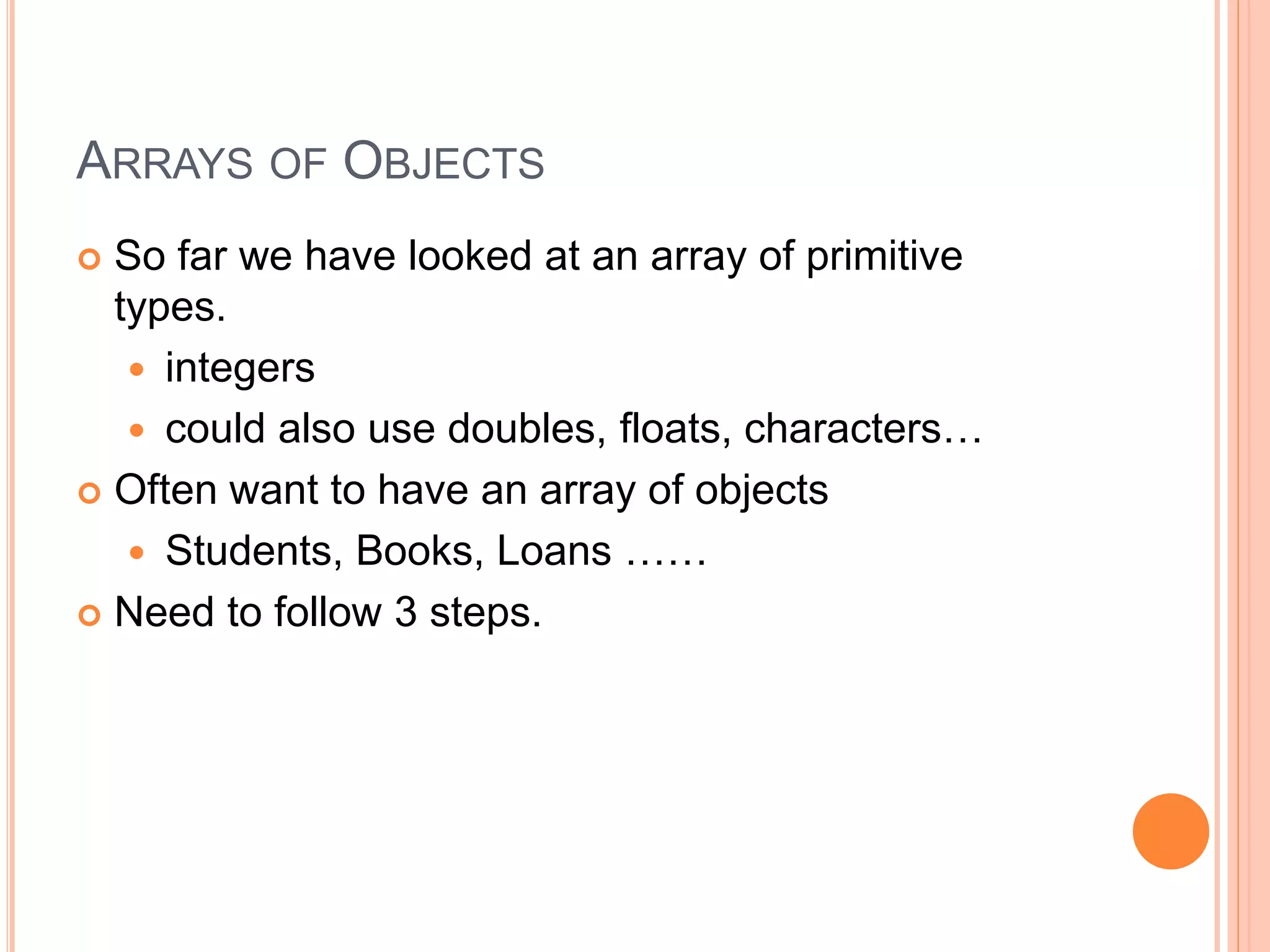
![DECLARING THE ARRAY
1. Declare the array
private Student studentList[];
this declares studentList
2 .Create the array
studentList = new Student[10];
this sets up 10 spaces in memory that can
hold references to Student objects
3. Create Student objects and add them to the
array: studentList[0] = new
Student("Cathy", "Computing");](https://image.slidesharecdn.com/uniti-advancedjavaprogrammingcourse-220321055128/75/Unit-I-Advanced-Java-Programming-Course-41-2048.jpg)